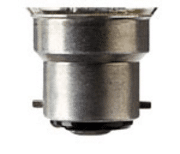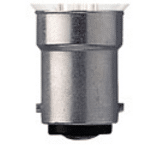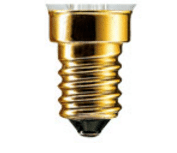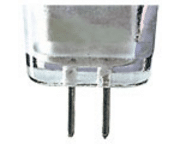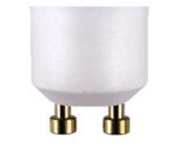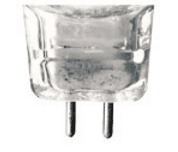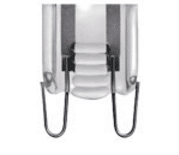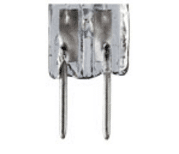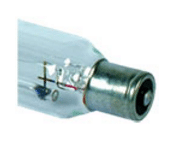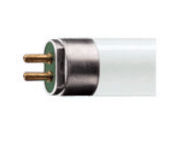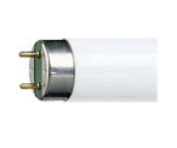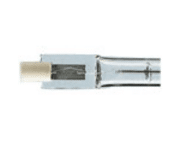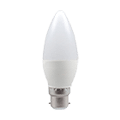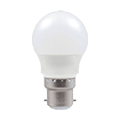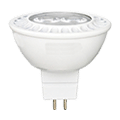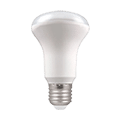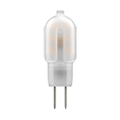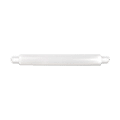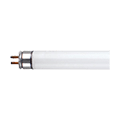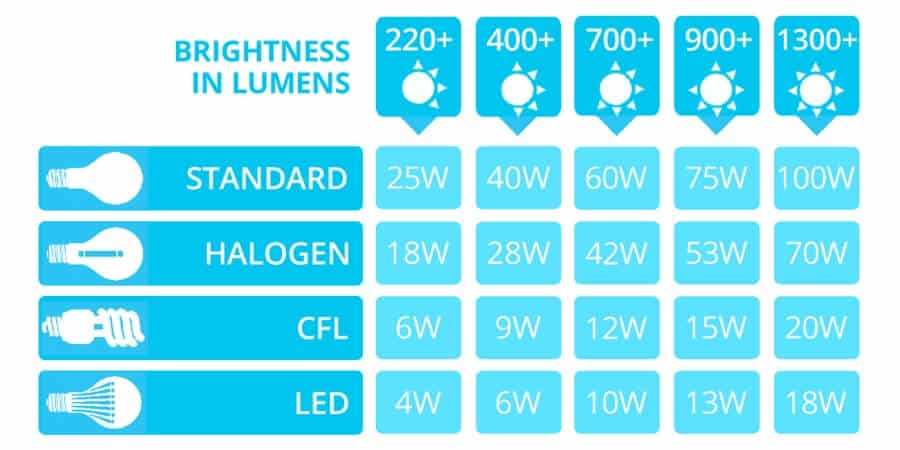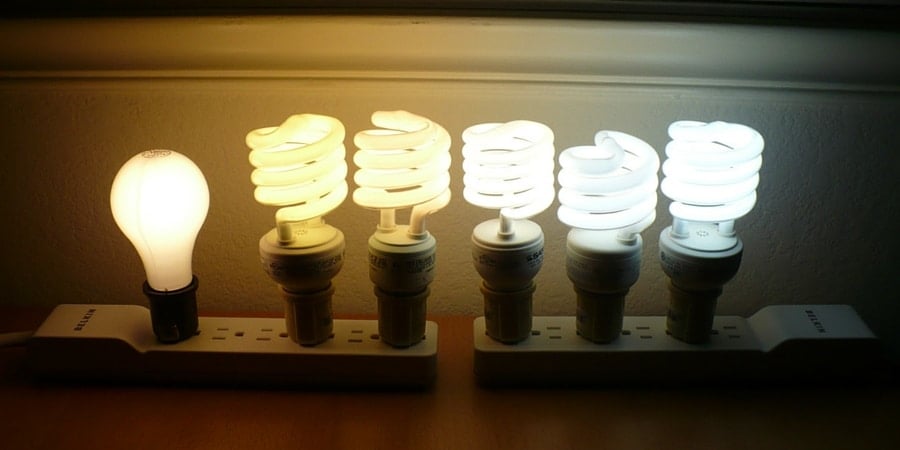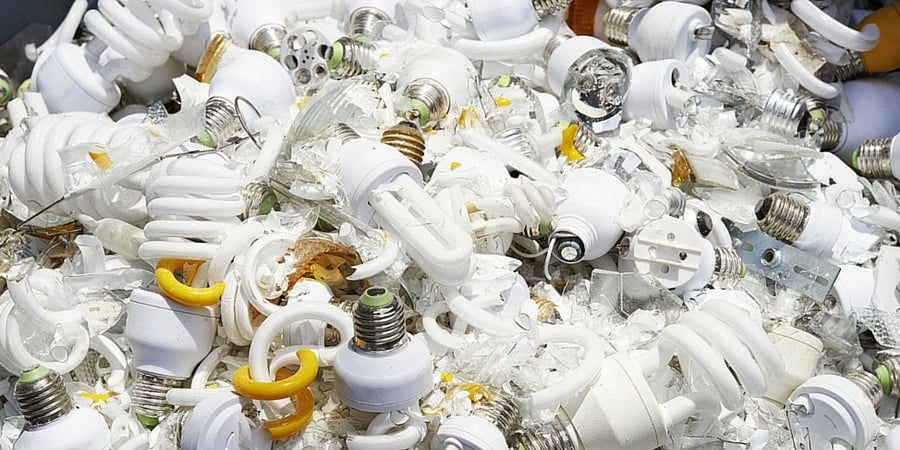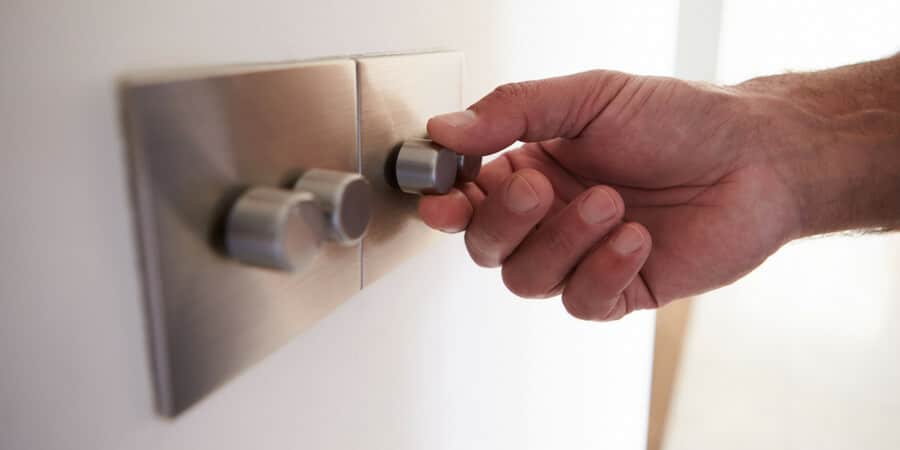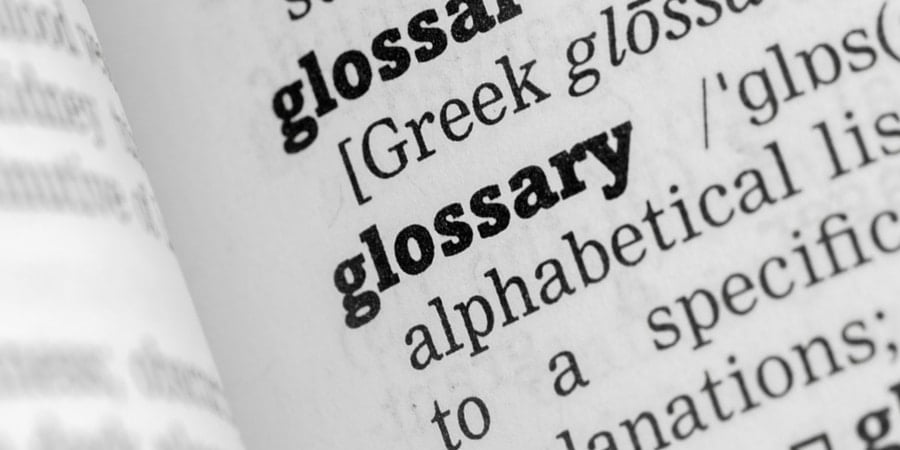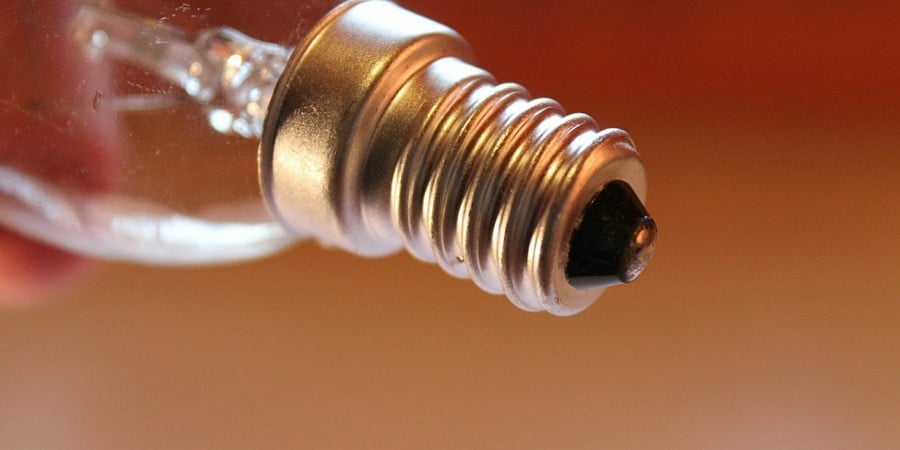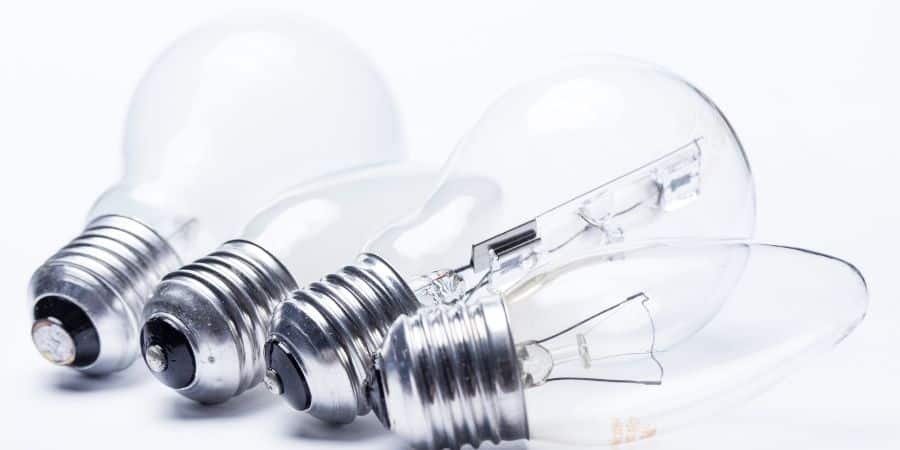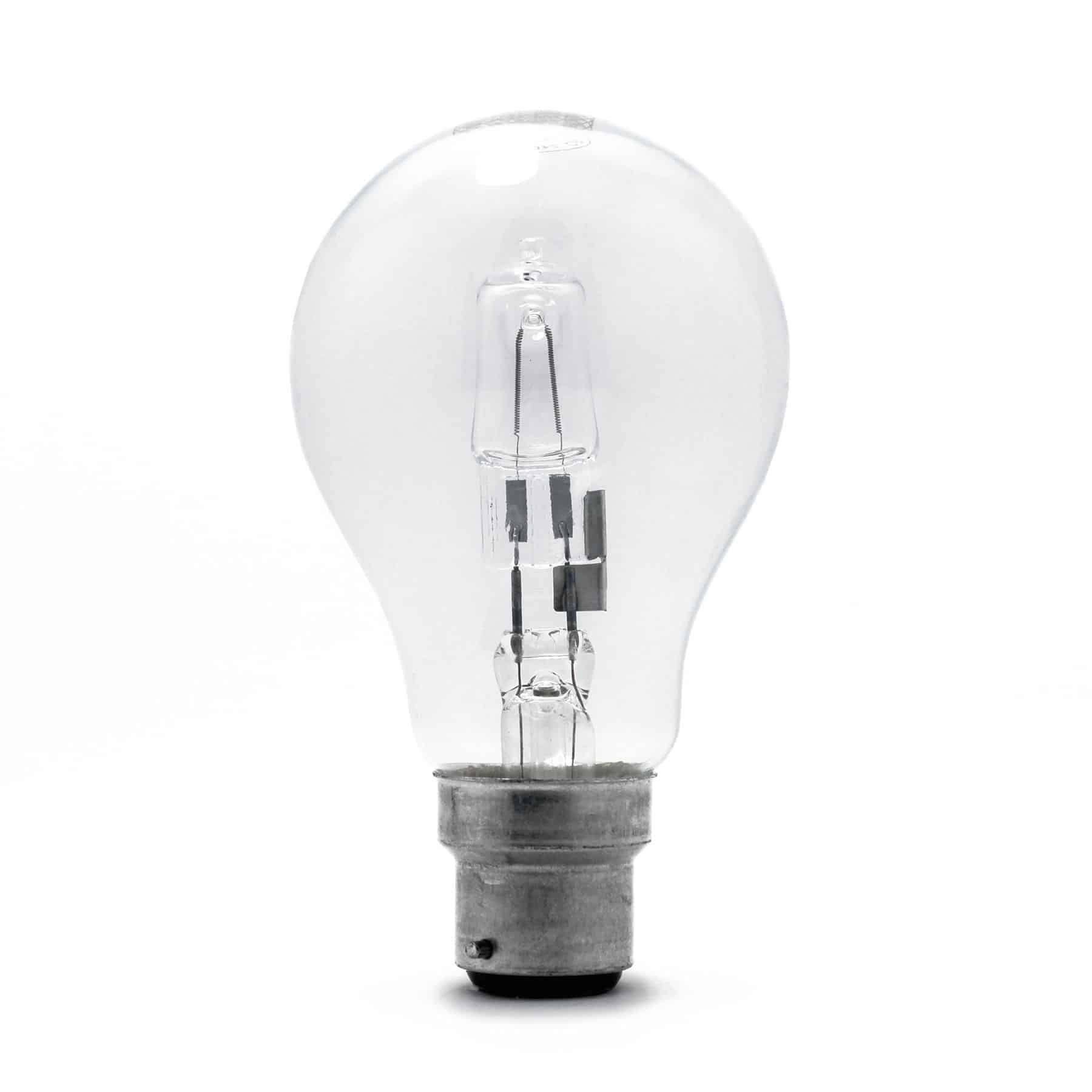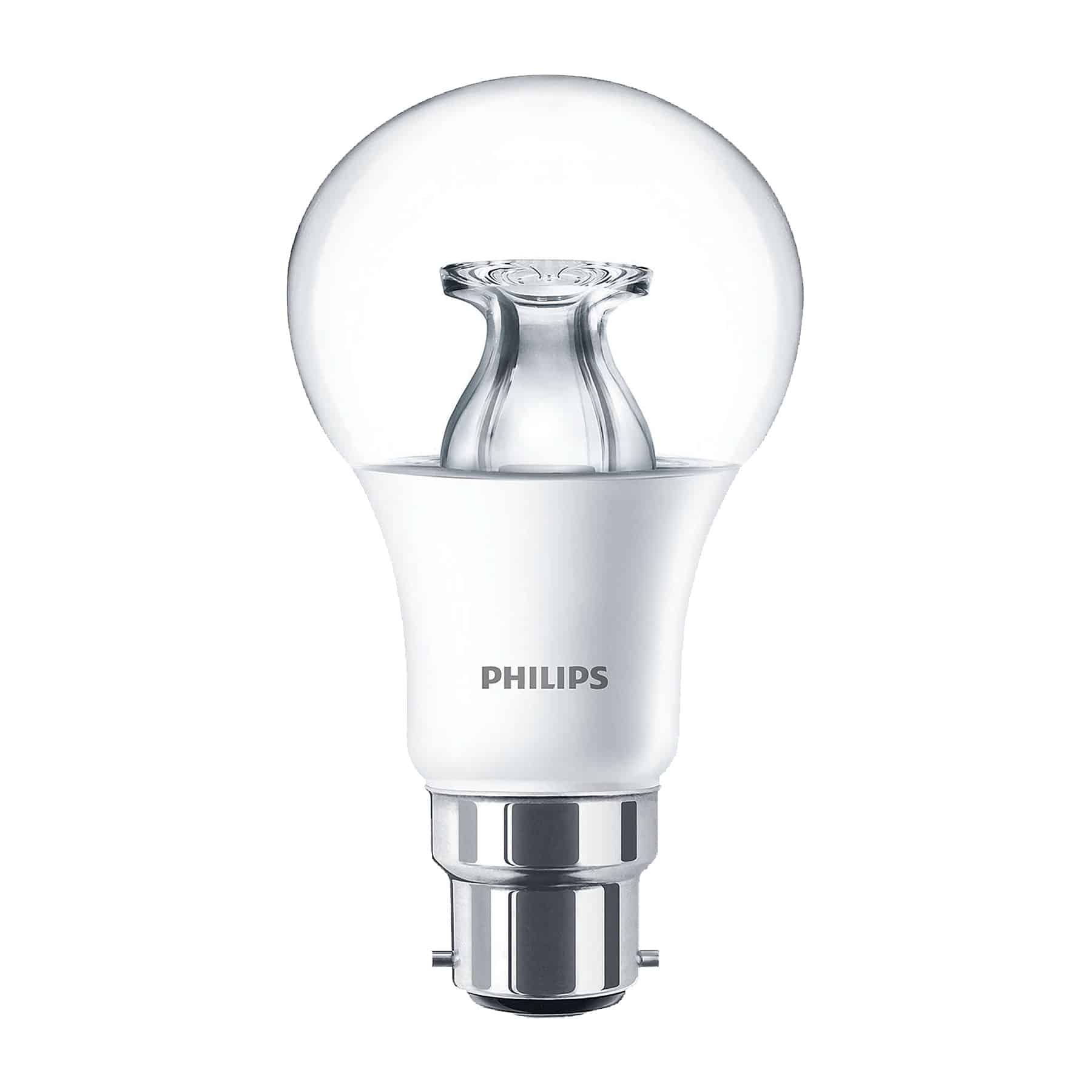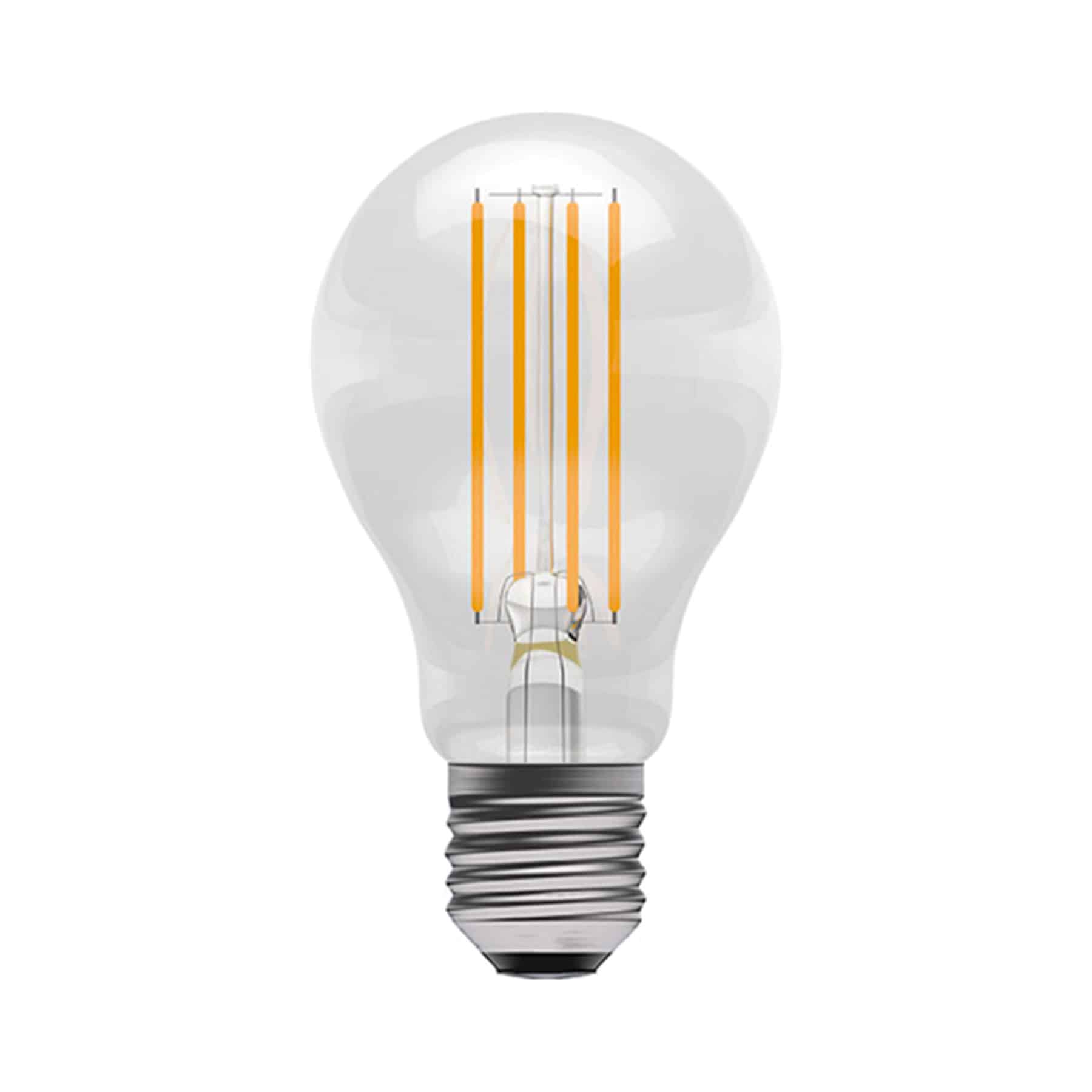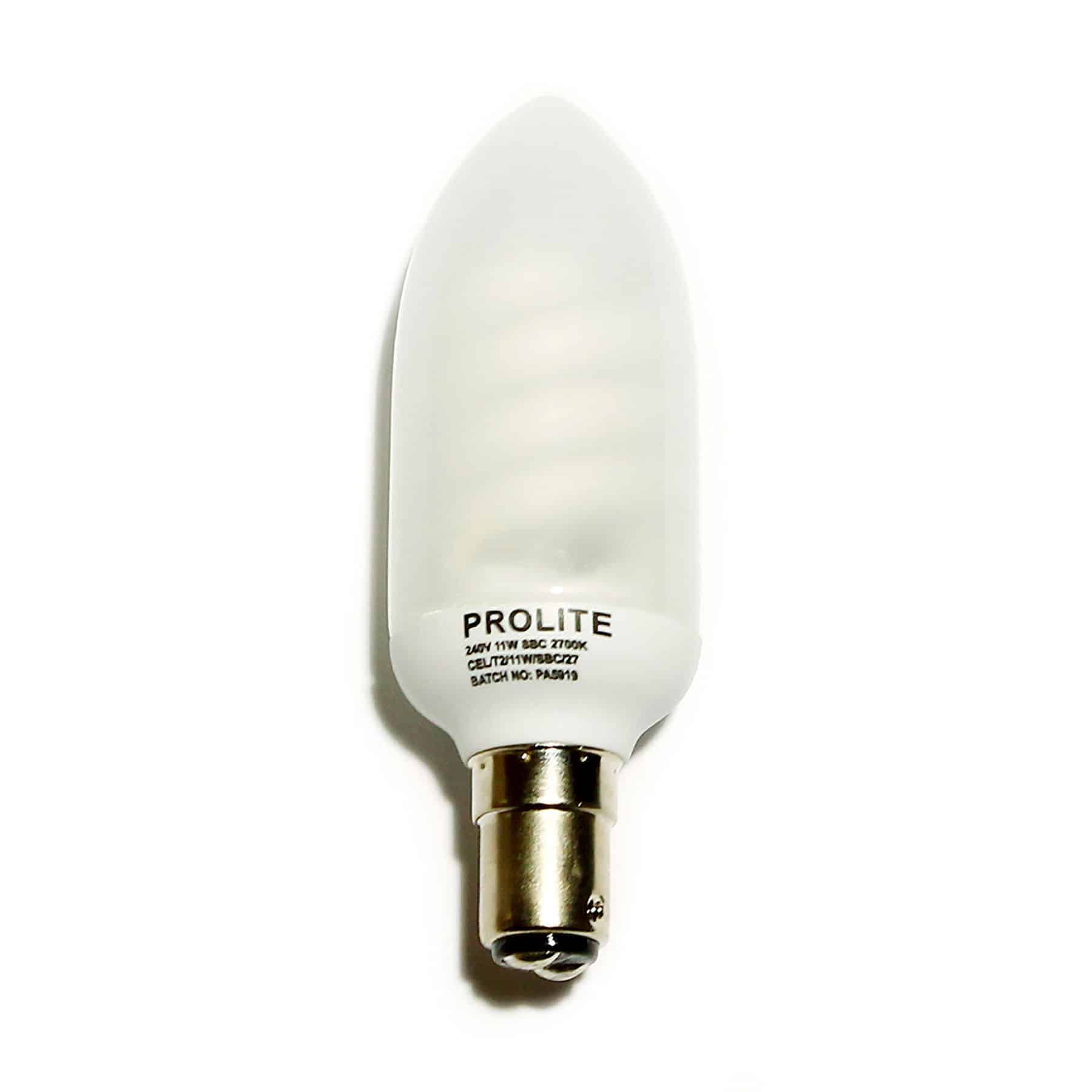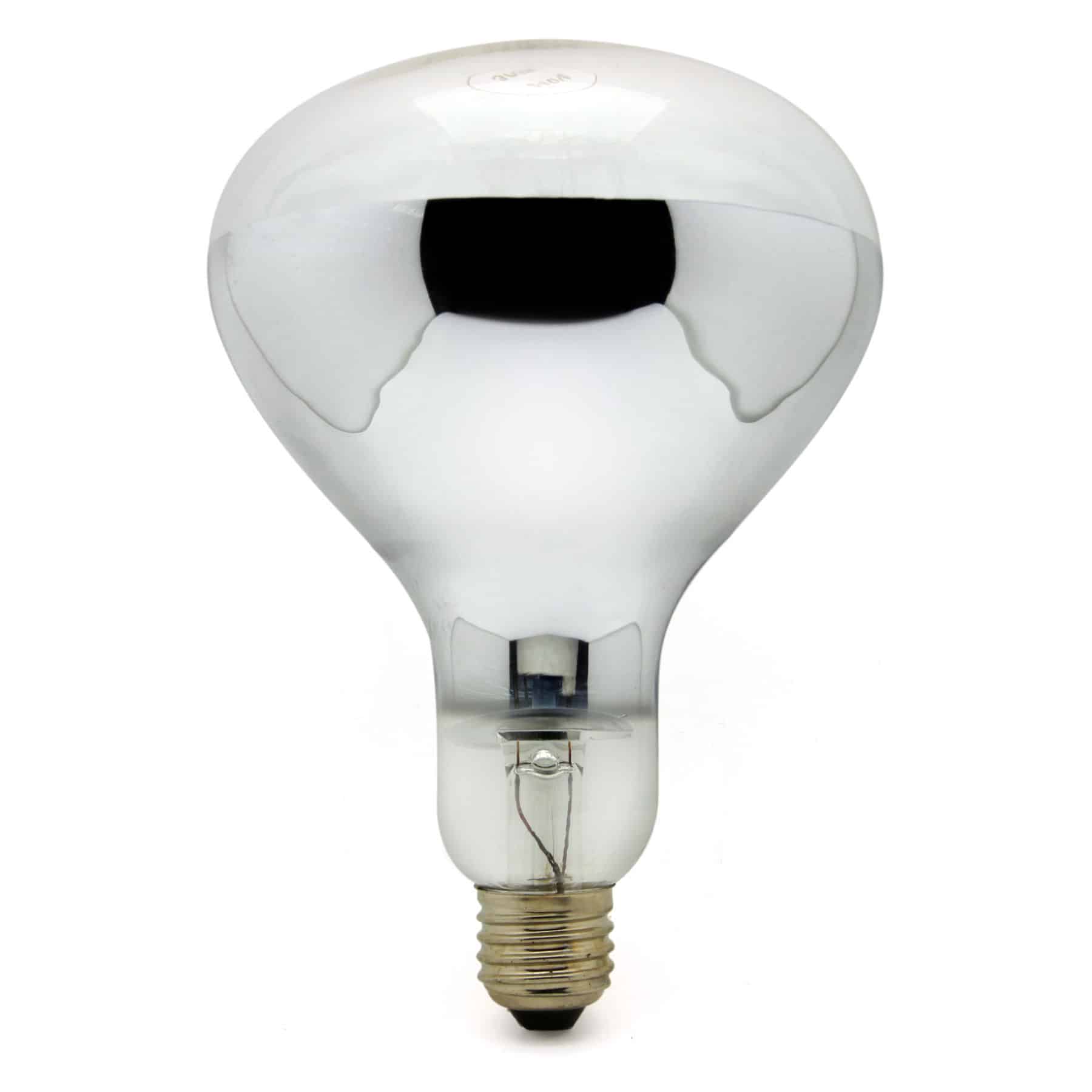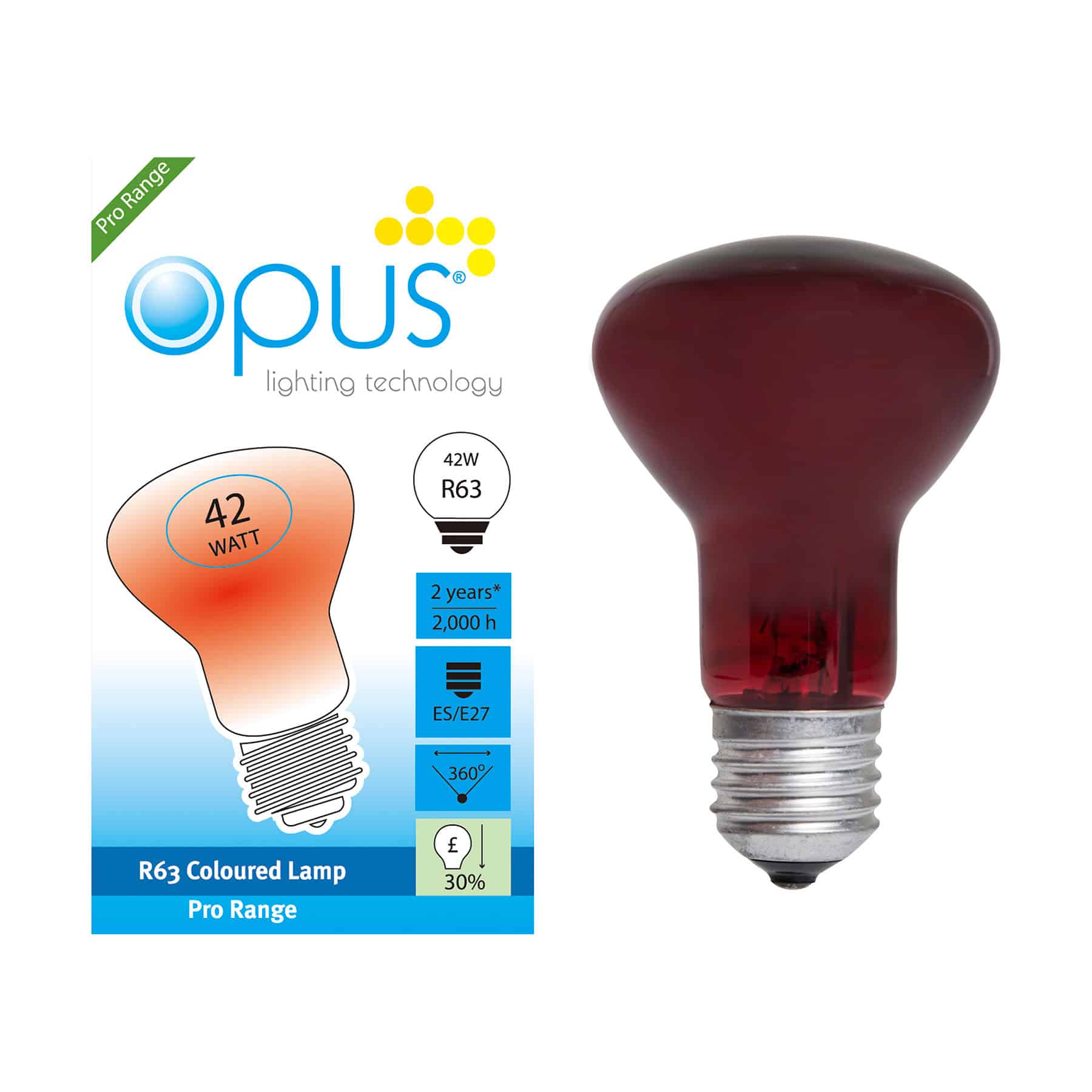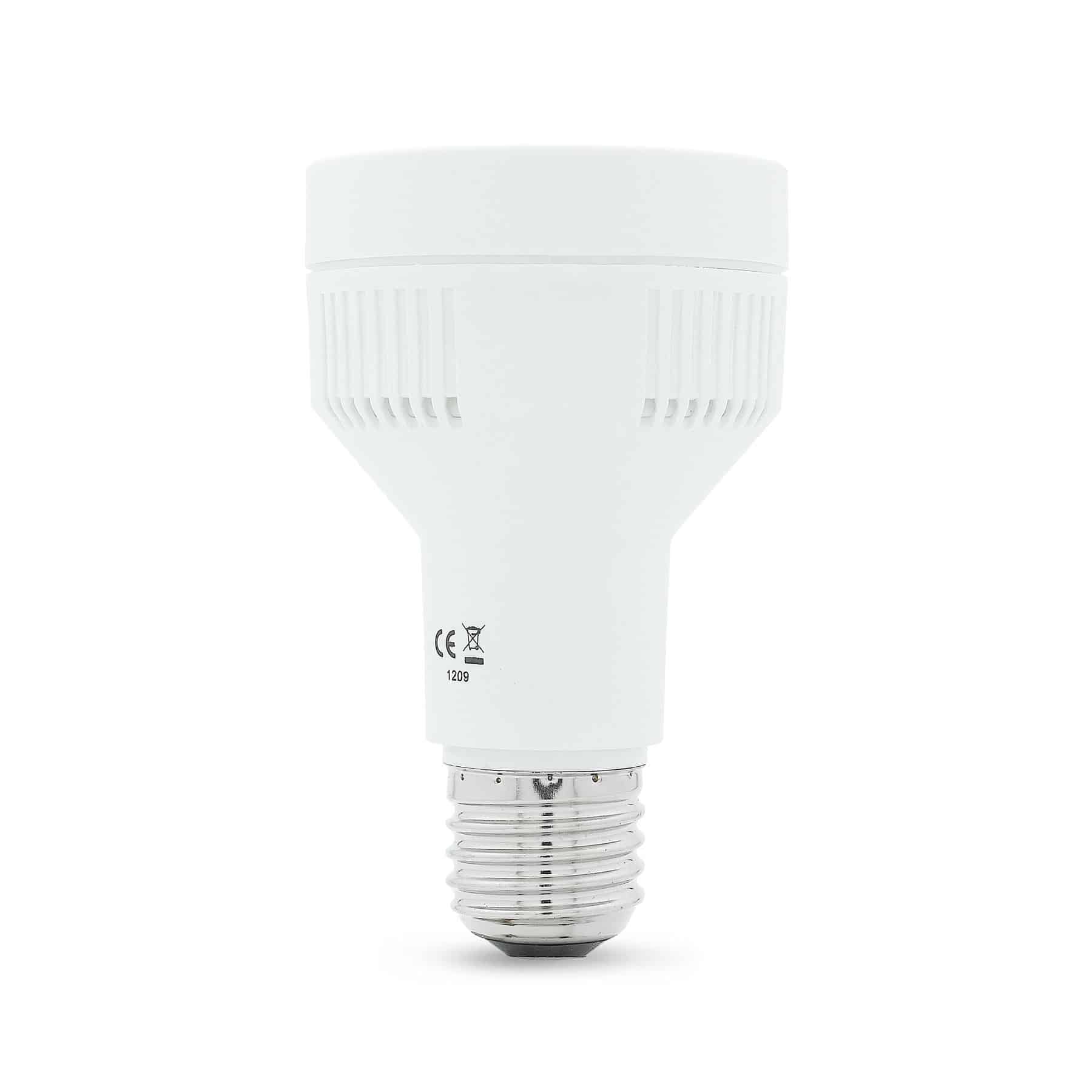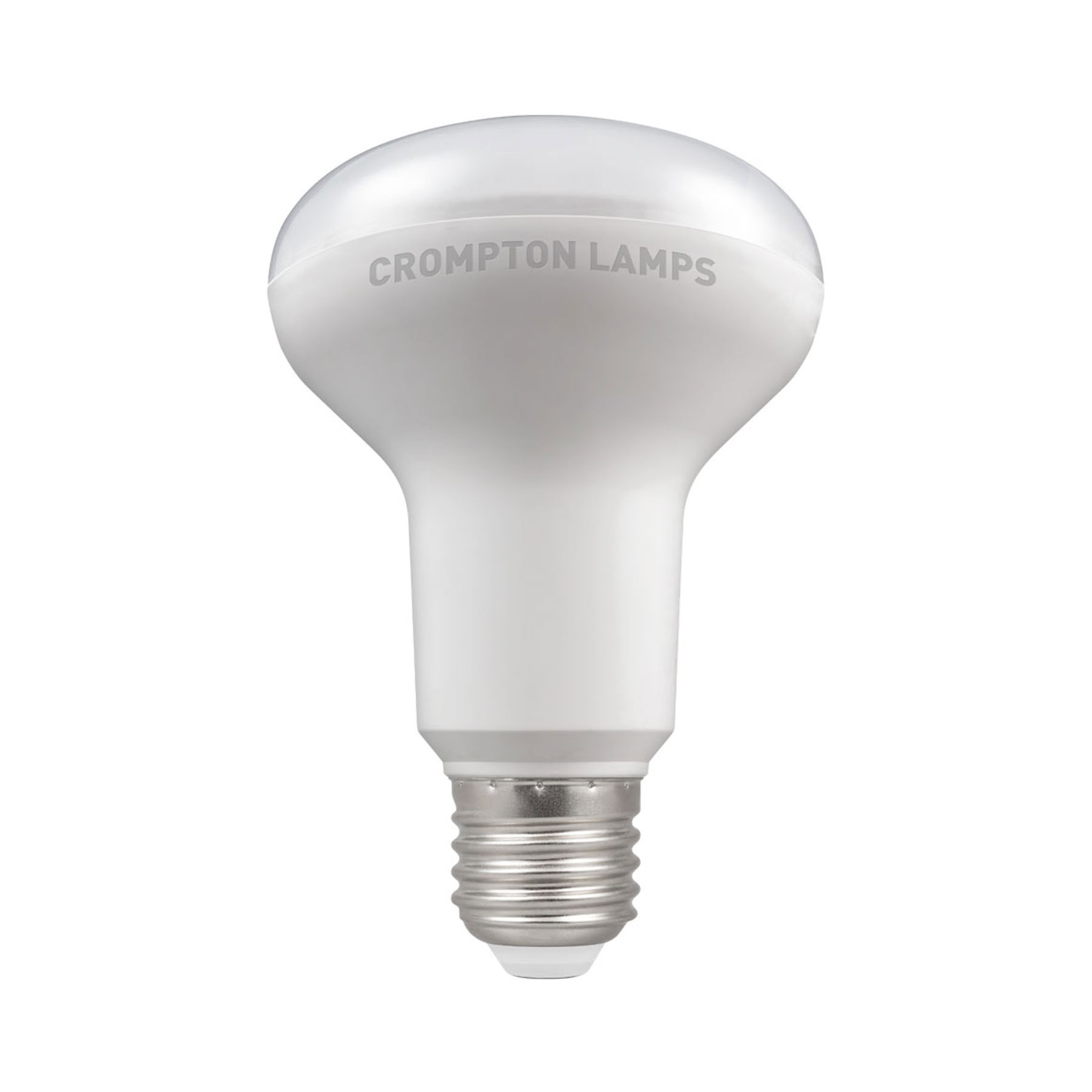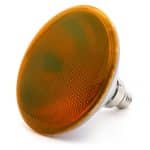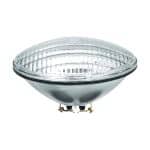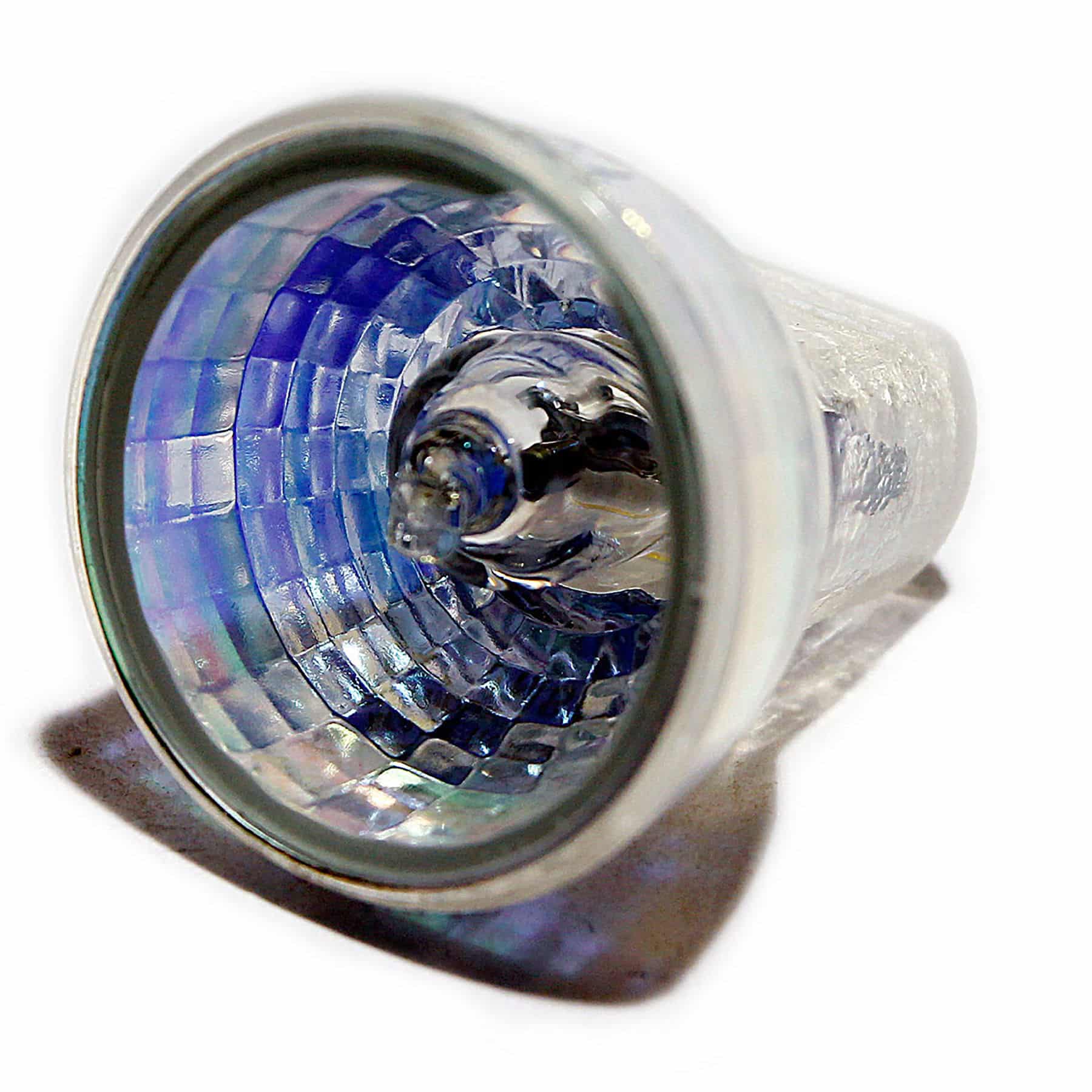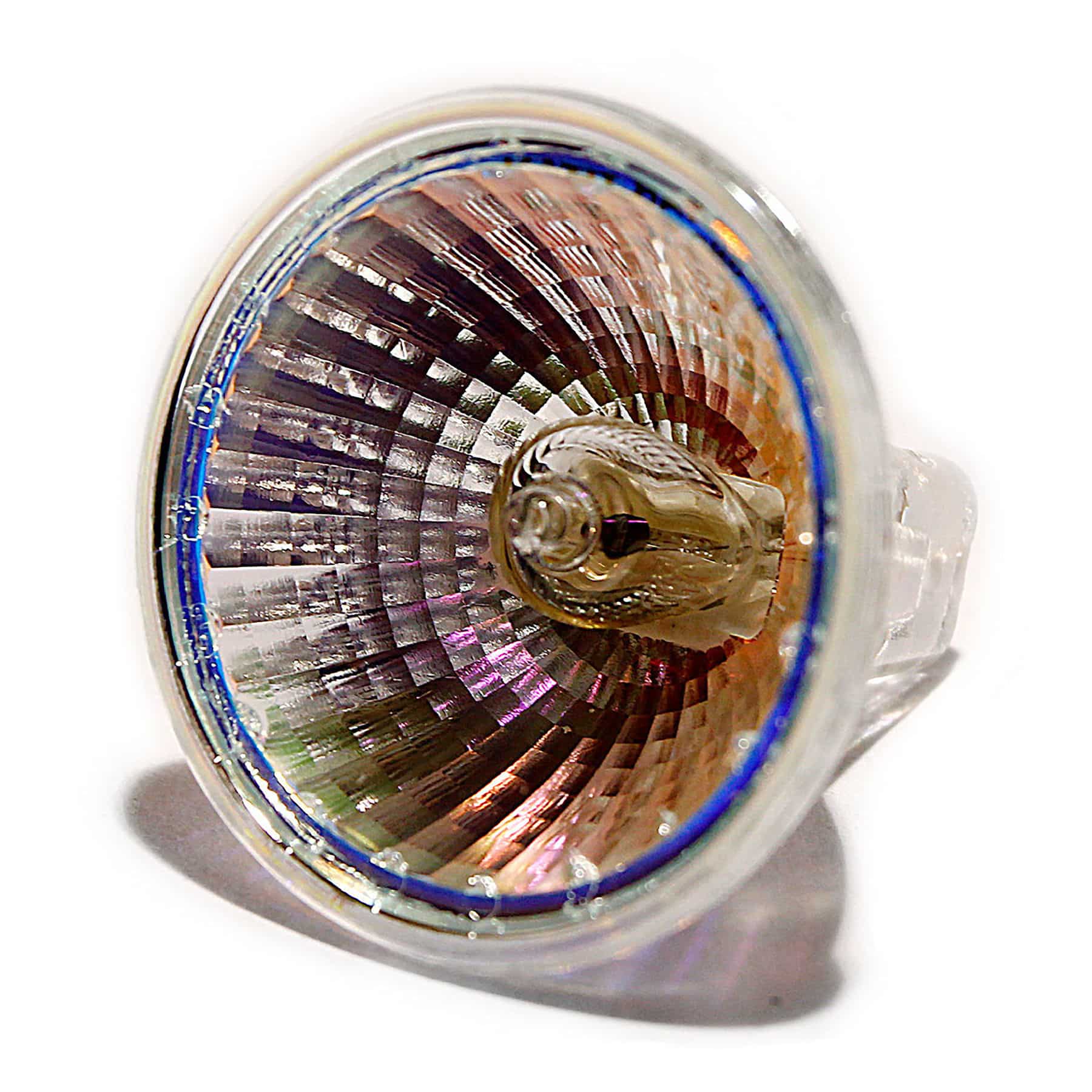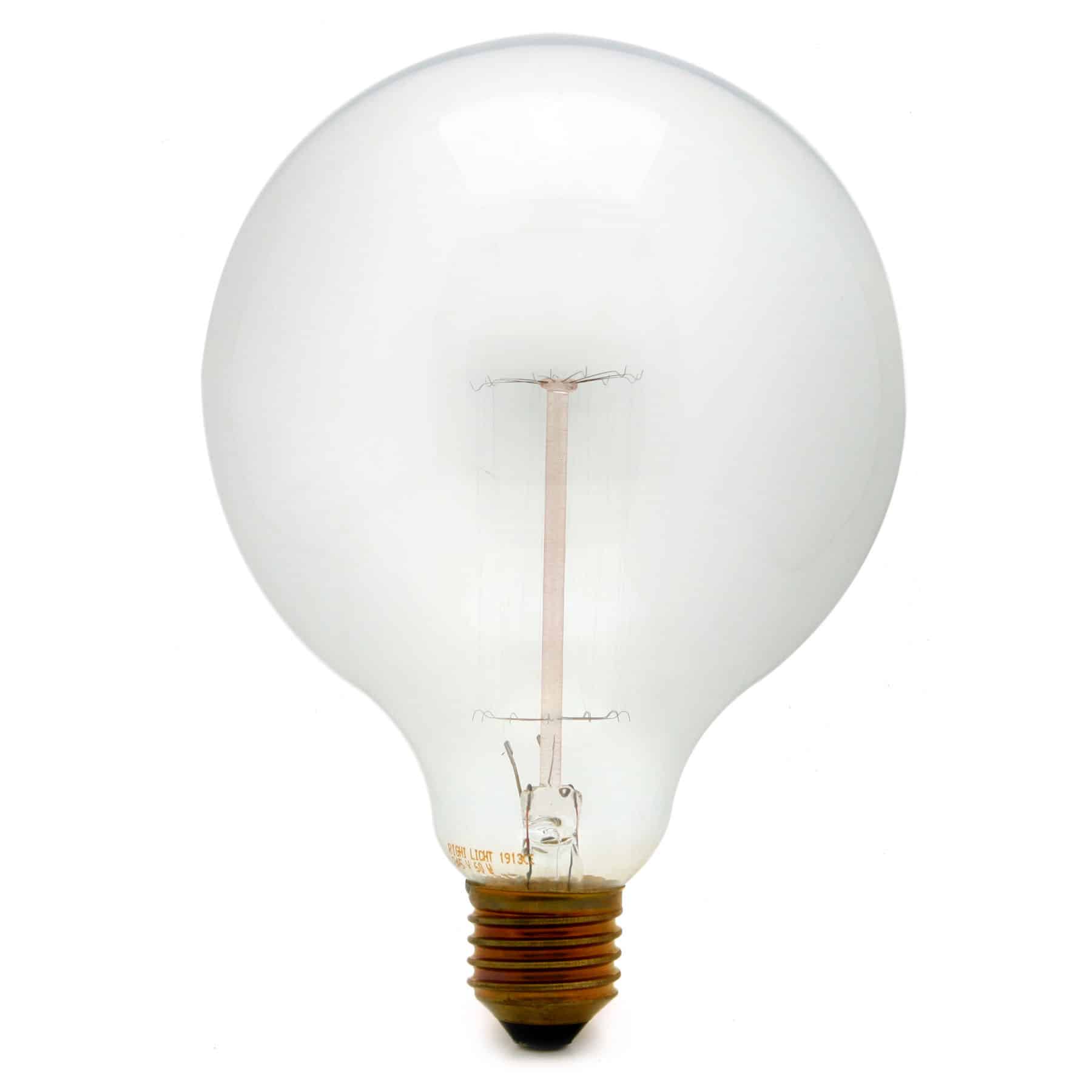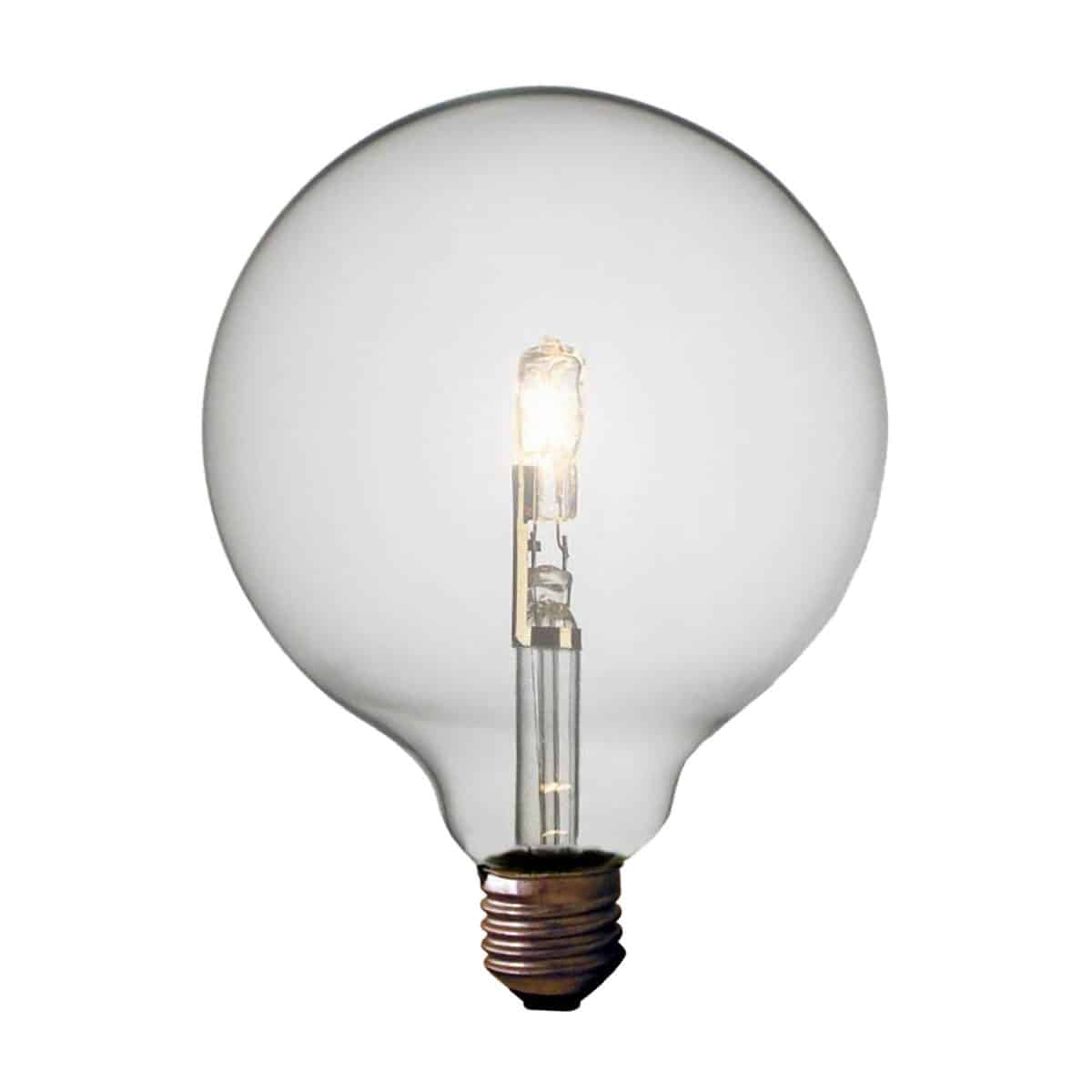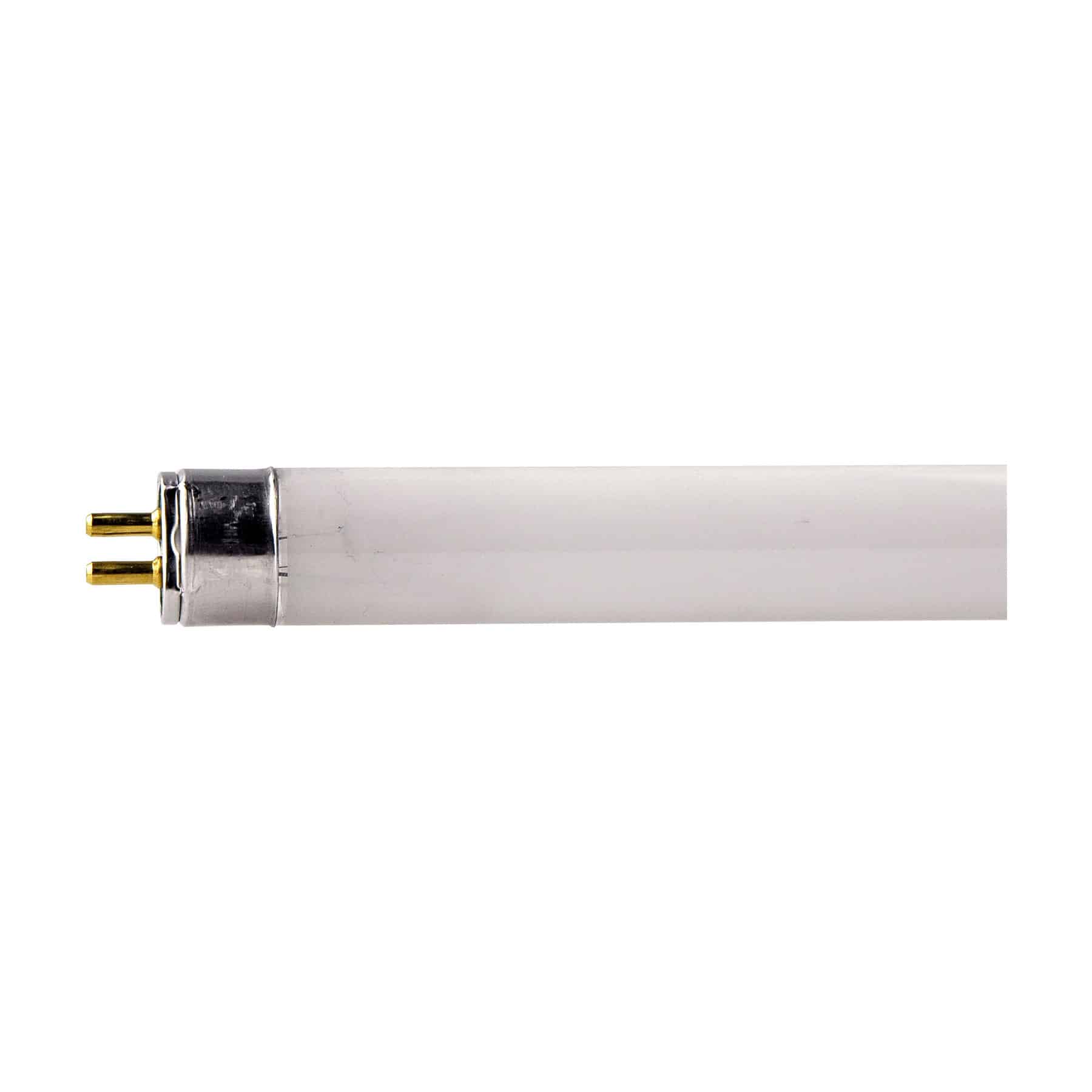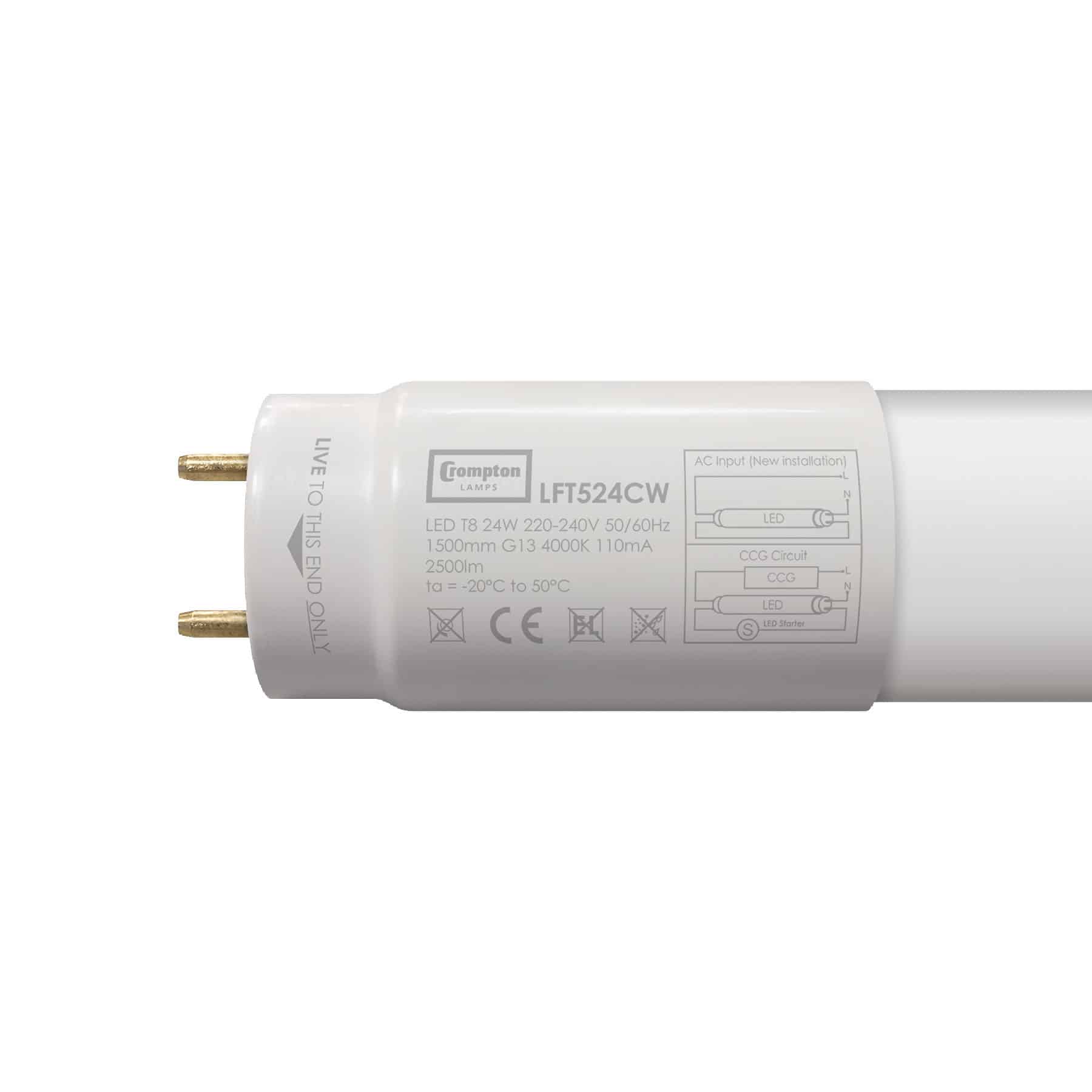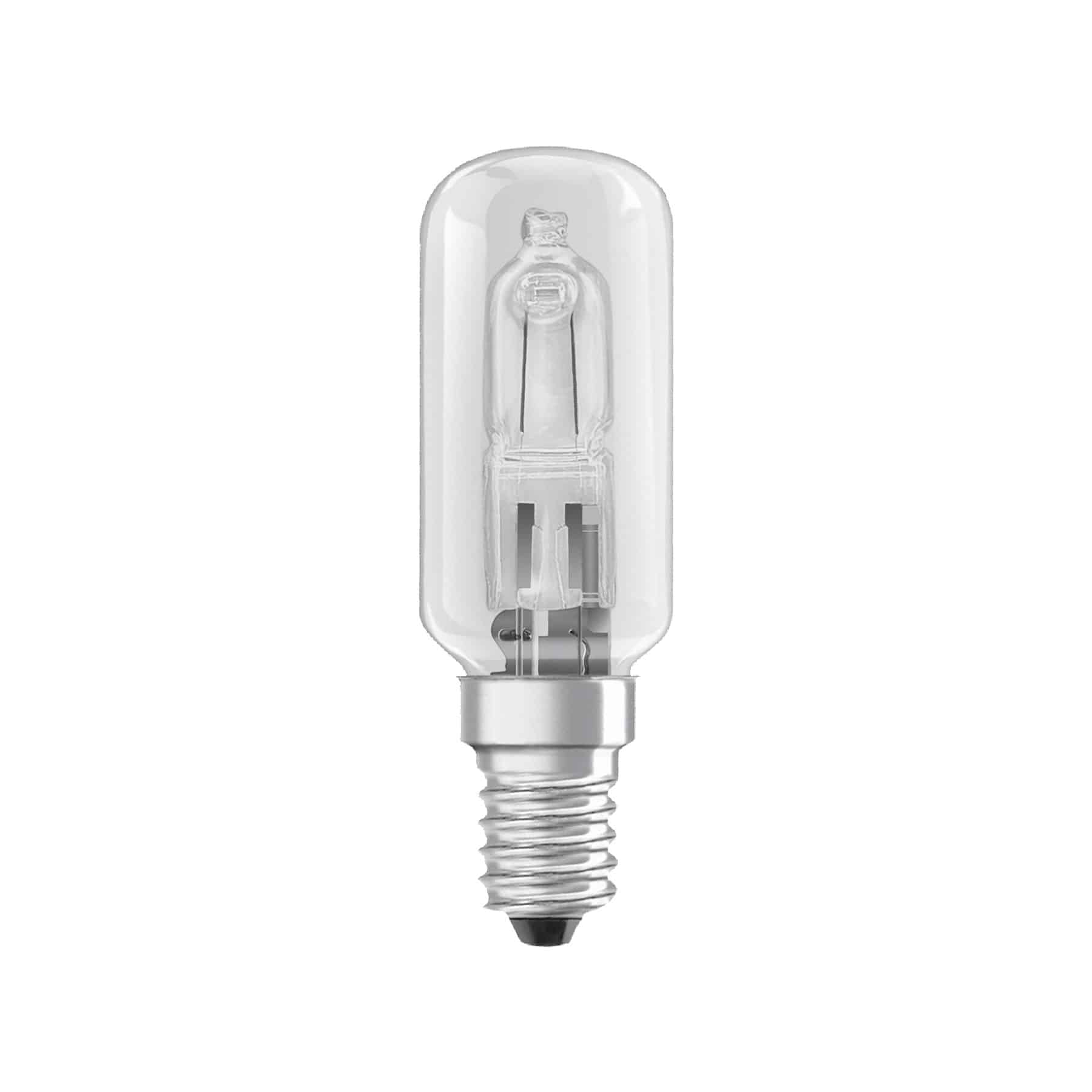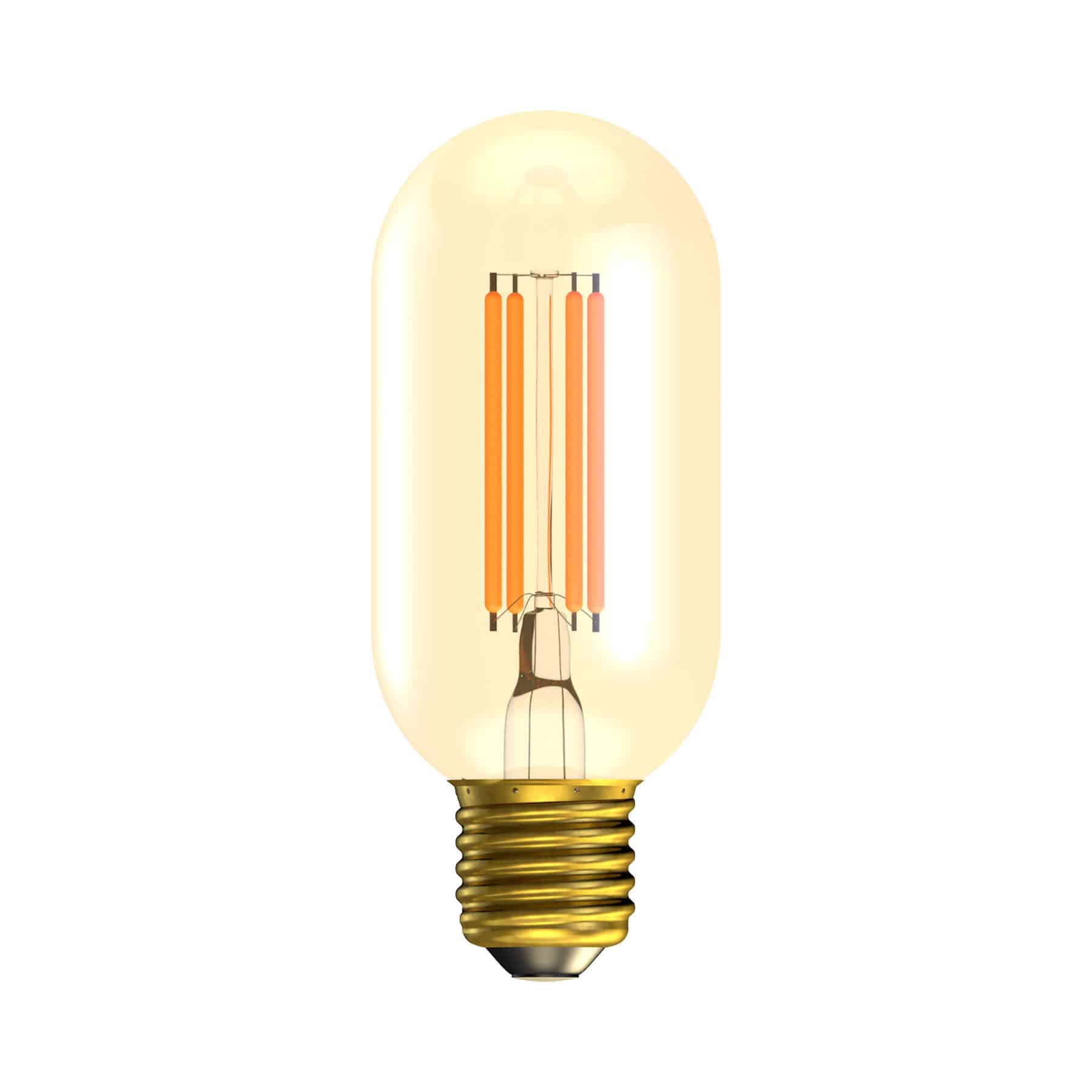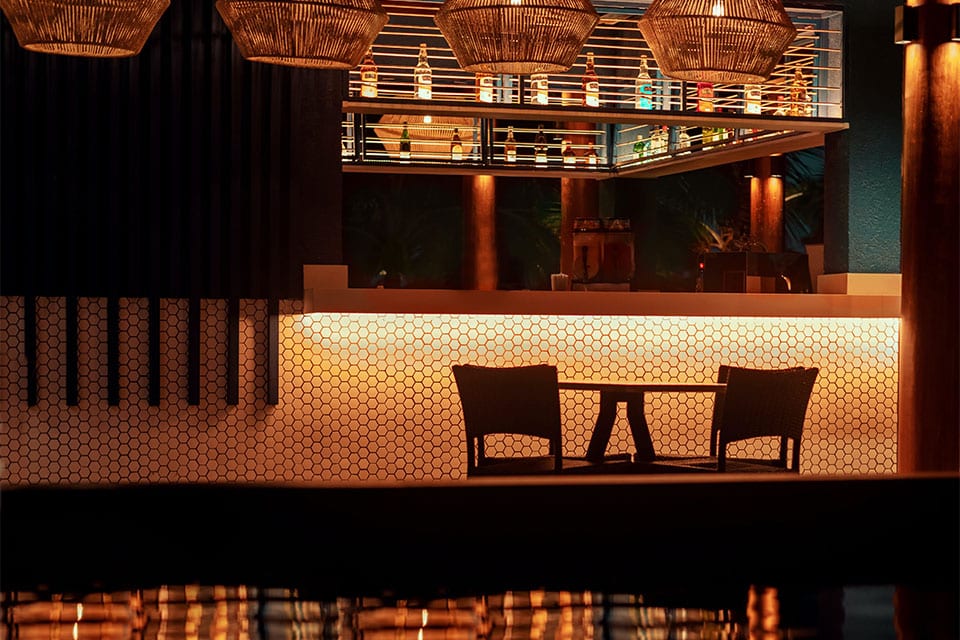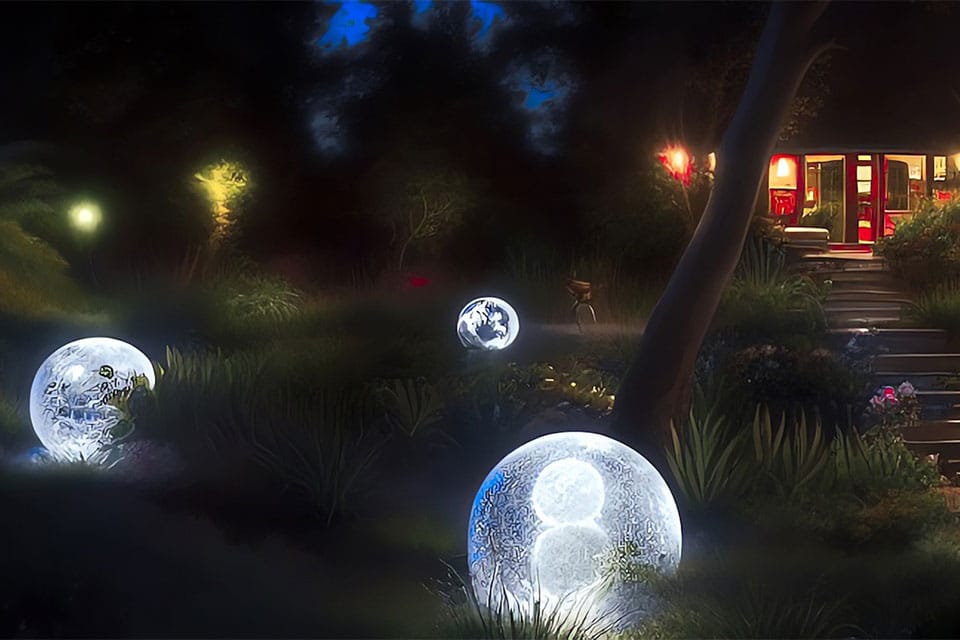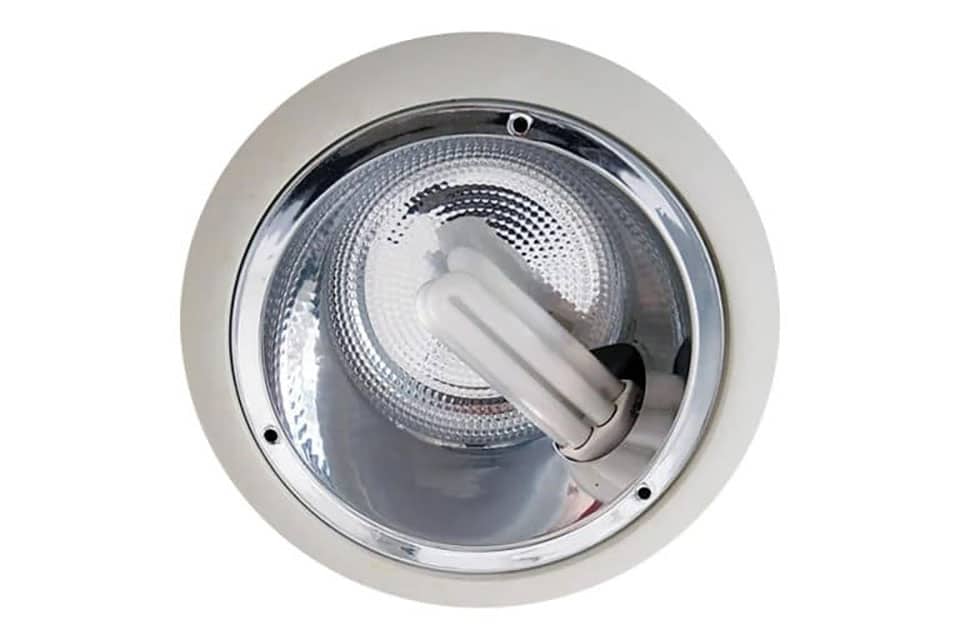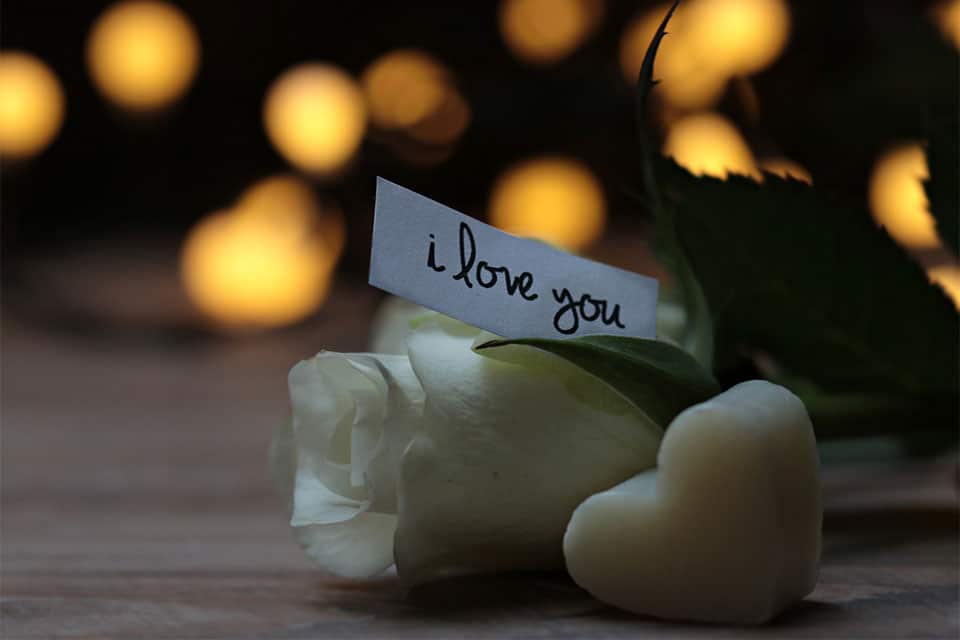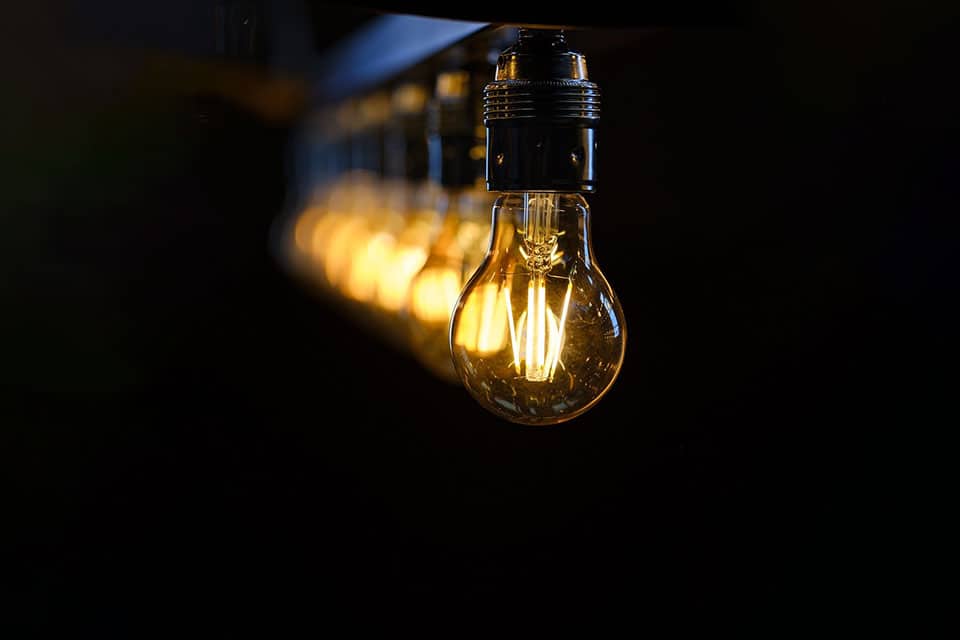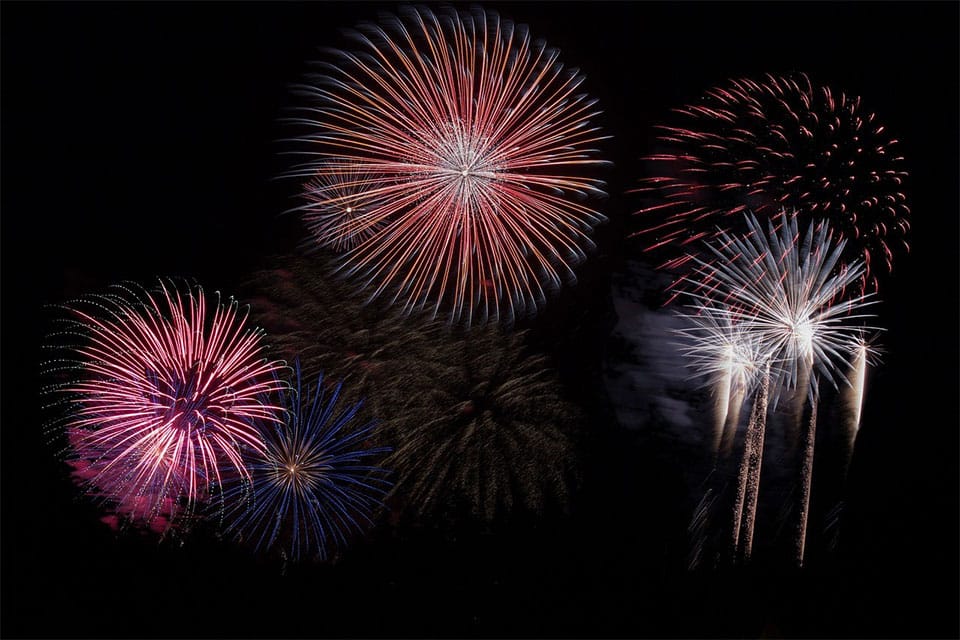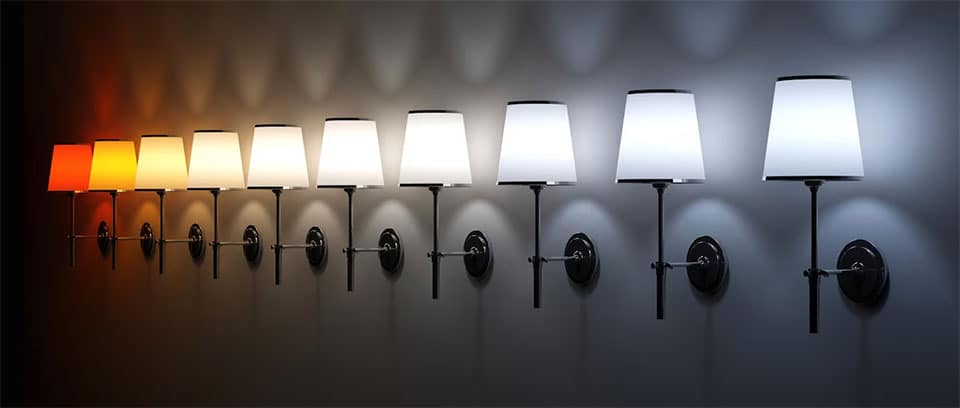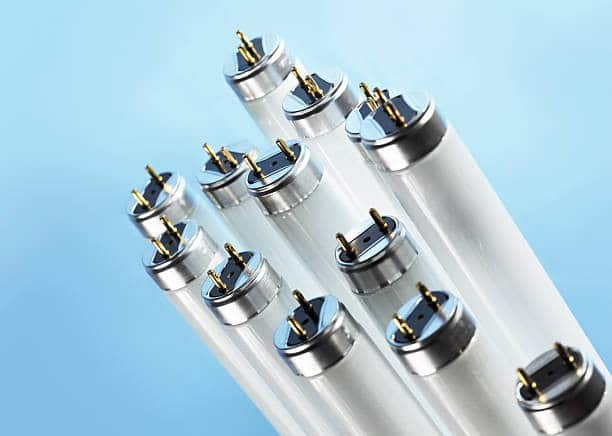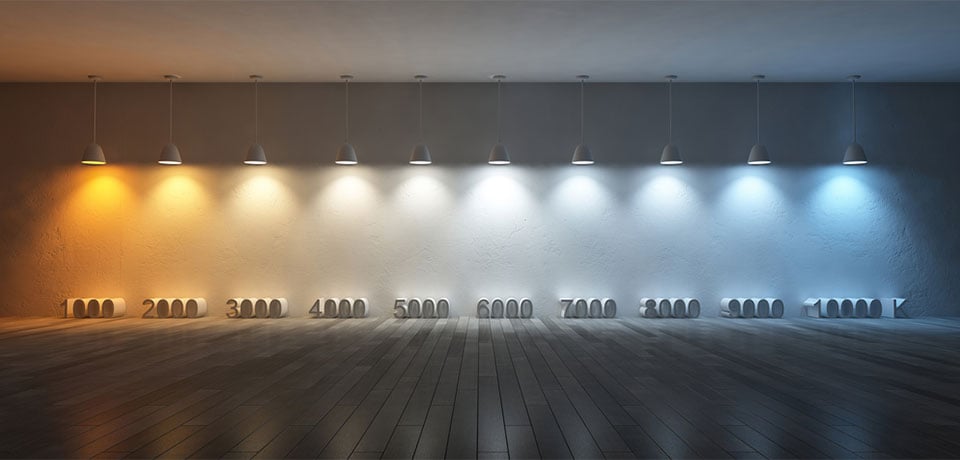Few shopping experiences are more daunting than facing a wall of different light bulb size and type, and trying to suss out which is the right one for you. Who hasn’t had to return a bulb because they’ve picked up the wrong base type or chosen a size that won’t fit in their fixture?
Between all the colours, shapes, wattages, base types, and sizes, it can feel like you need an advanced degree just to select the proper bulb. With our light bulb size charts and series guide, we will look at some of the most commonly used light bulbs and give you the necessary information to complete the lighting puzzle and find the product you need, including their:
- Light bulb series
- Light bulb shape
- Caps and bases
- Light bulb dimensions
- Commonly used locations
A light bulb’s series indicates its shape, followed by a number code that indicates the light bulb’s diameter in millimeters or one-eighths of an inch, depending on the type. This guide is organized by series, with information about other common names, sizes (including light bulb size charts for each series), typical uses, and popular caps and bases.
A Series
A-series light bulbs are the classic shape most people think of when they imagine a light bulb. A-series bulbs are also known as Arbitrary, General Lamp Service (GLS), or Standard bulbs. These light bulbs are commonly available with both bayonet (B22) and screw (E27) base types and have a wide variety of applications. They are most often used in the home in:
- Ceiling lamps
- Kitchen lamps
- Table and floor lamps
- Porch lamps
- Reading lamps
A60 or A19 Size Chart (the standard light bulb) |
|
|---|---|
| Light bulb | 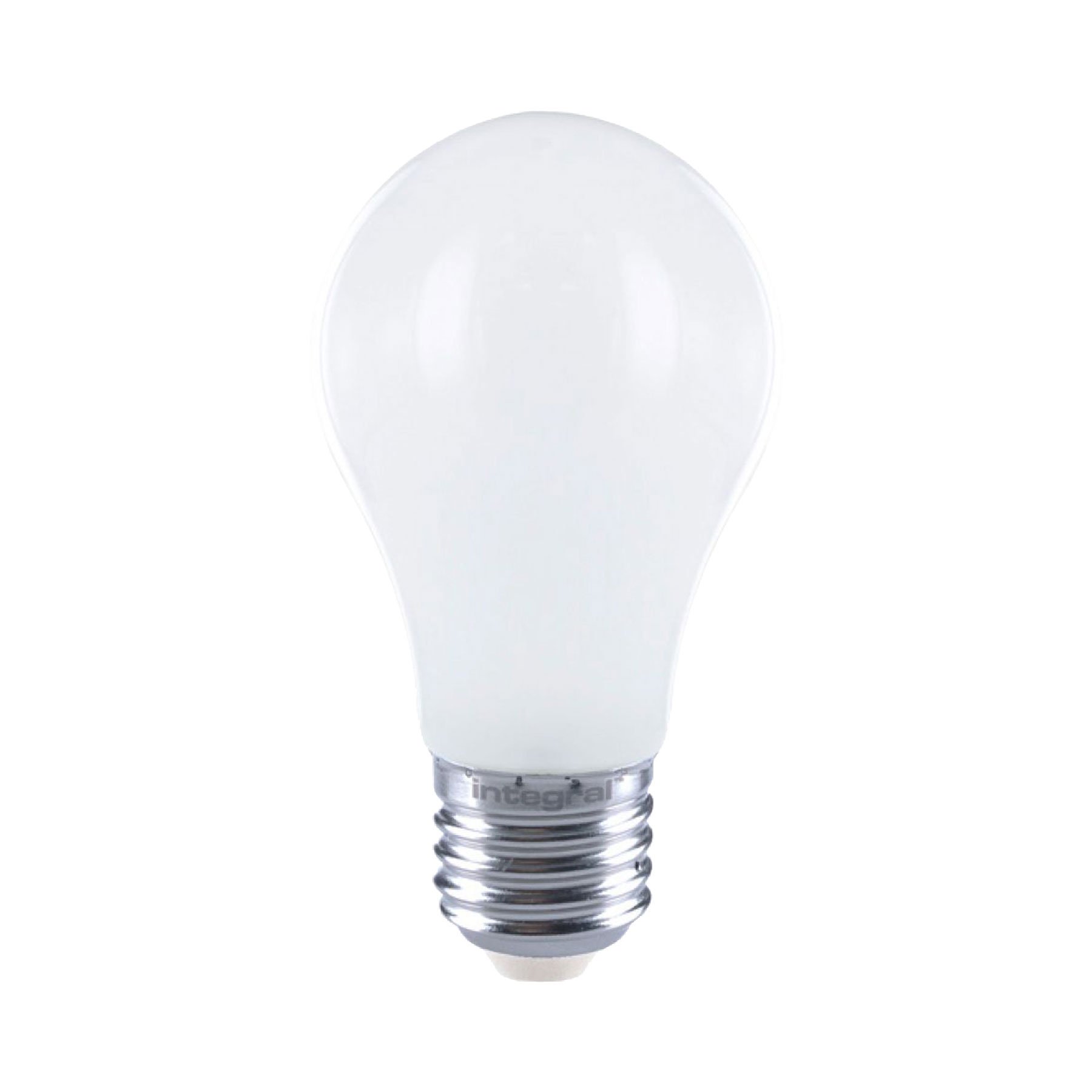 |
| Light bulb code | A60 (UK) or A19 (US) |
| Diameter in millimetres | 60mm |
| Diameter in one-eights of an inch | 19/8 (2 3/8" diameter) |
| Common lengths | 100-110mm (3.9-4.3 inches) |
B/C series
Blunt (B), Candle or Conical (C) series bulbs are all light bulbs that emulate the shape of a candle flame. They are smaller in size than most other light bulb series. Each bulb has a slightly different shape—CA looks the most like a candle flame with a slightly curved tip, followed by C and B, which look more blunted and stylized. They are commonly used in:
- Chandeliers
- Artificial candles
- Night lights
- Holiday lighting
- Other decorative light fixtures
As a typically decorative bulb, B, and C series bulbs are available in a range of base types to fit in small fixtures, including: E12, ES14, B15, B22, and E27.
Most commonly used B/C series bulbs size chart |
|
|---|---|
| Light bulb | 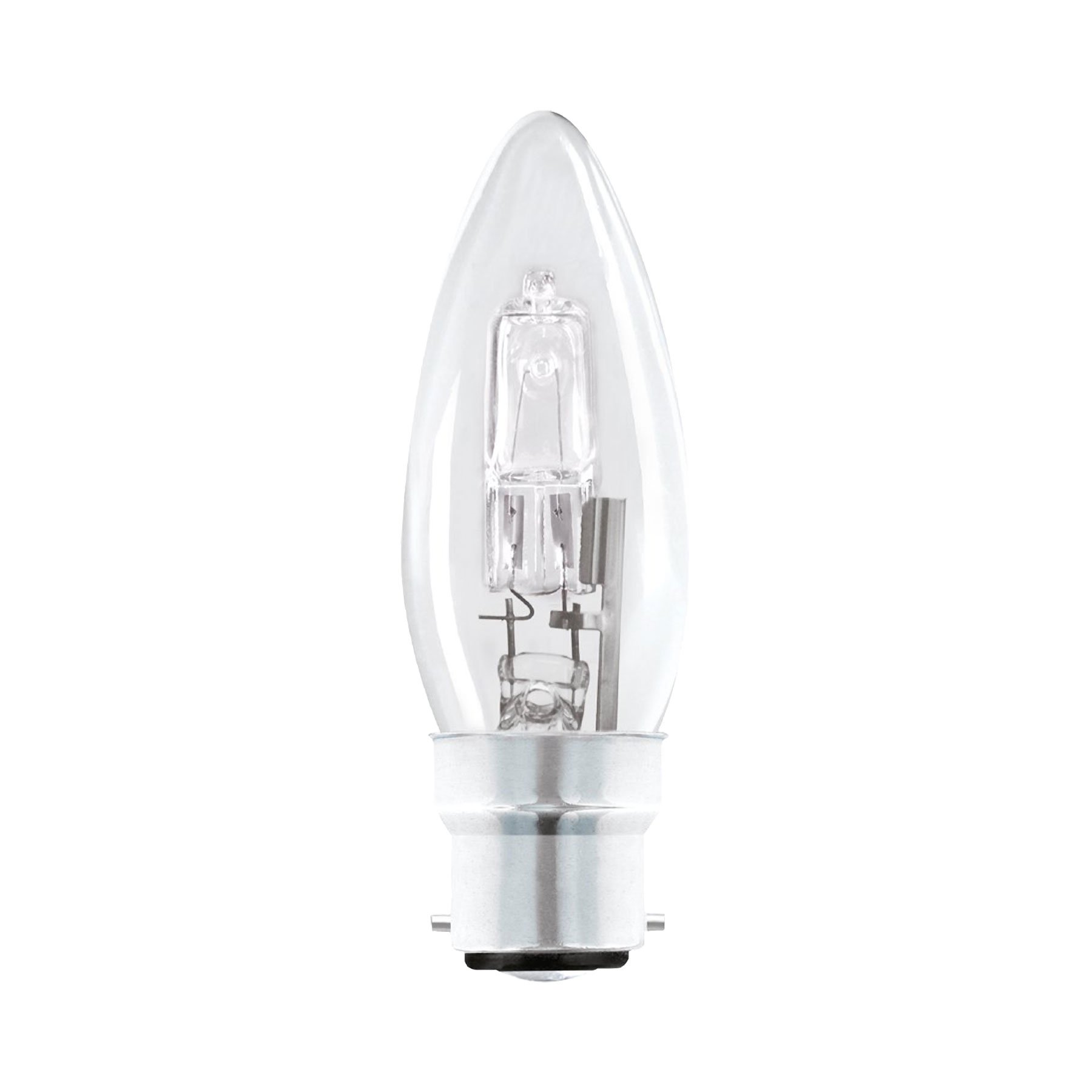 |
| Light bulb code | B35/C35 |
| Diameter in millimetres | 35mm |
| Common lengths | 90-100mm |
R & BR Series
Sometimes used interchangeably, Reflector (R) or Bulged Reflector (BR) bulbs are internally lined with a reflective material that helps project the light out of the bulb to produce a wide beam angle. They also have a flat (R) or bulged (BR) surface made up of coloured, frosted, clear, or patterned glass or plastic that helps diffuse and distribute the light more evenly.
Facts of Light: You will typically find that LED reflector bulbs don’t have a reflective material lining them. This is because LEDs are highly directive and all of the light source can be aimed outward, rather than requiring a reflective surface to bounce off of.
Reflector and Bulged Reflector series light bulbs provide a very wide beam angle, making them ideal for use in a variety of both commercial and residential settings. They are most commonly used in:
- Track lights
- Recessed lights
- Display lights
Most commonly used R/BR series bulbs size chart |
|||
|---|---|---|---|
| Light bulb | 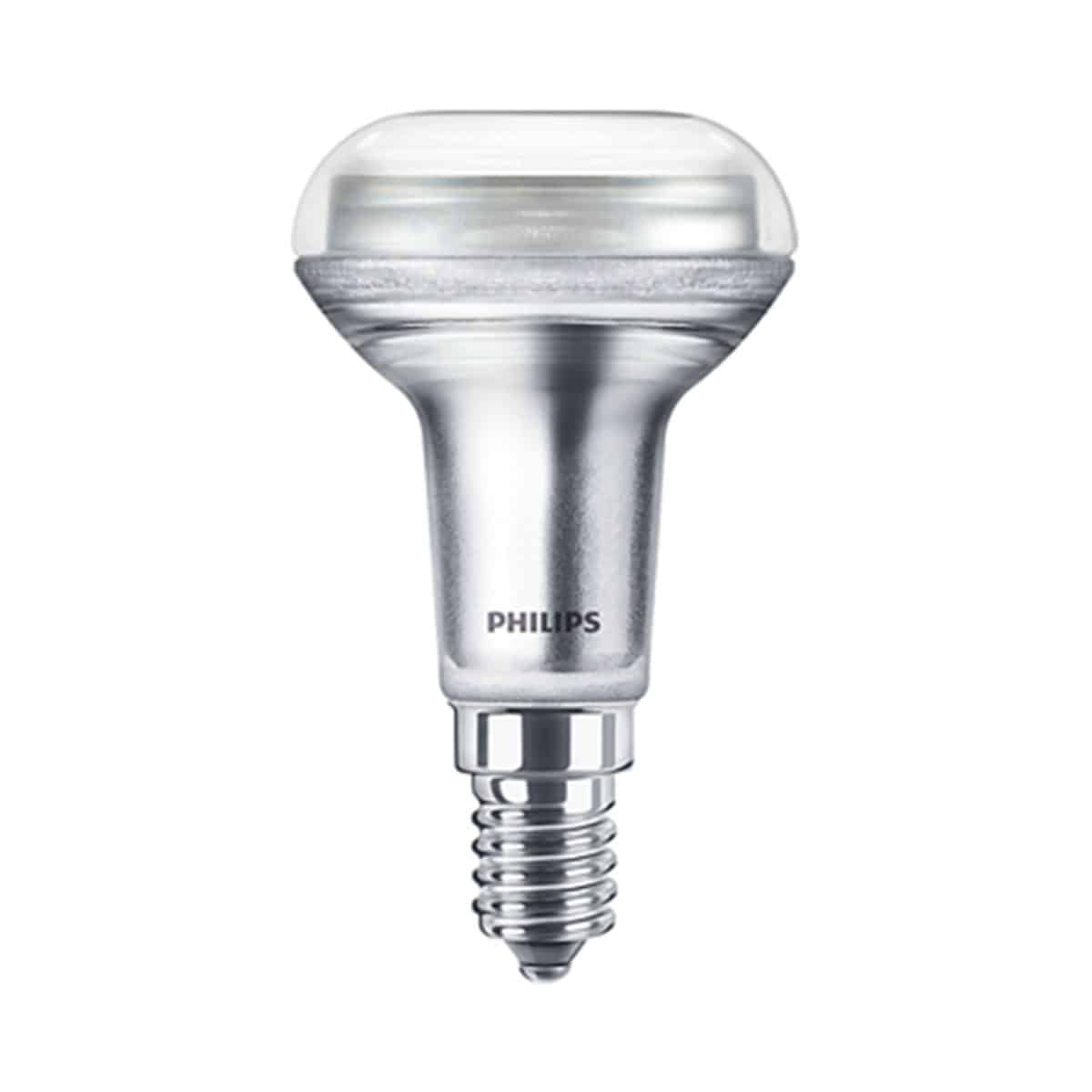 | 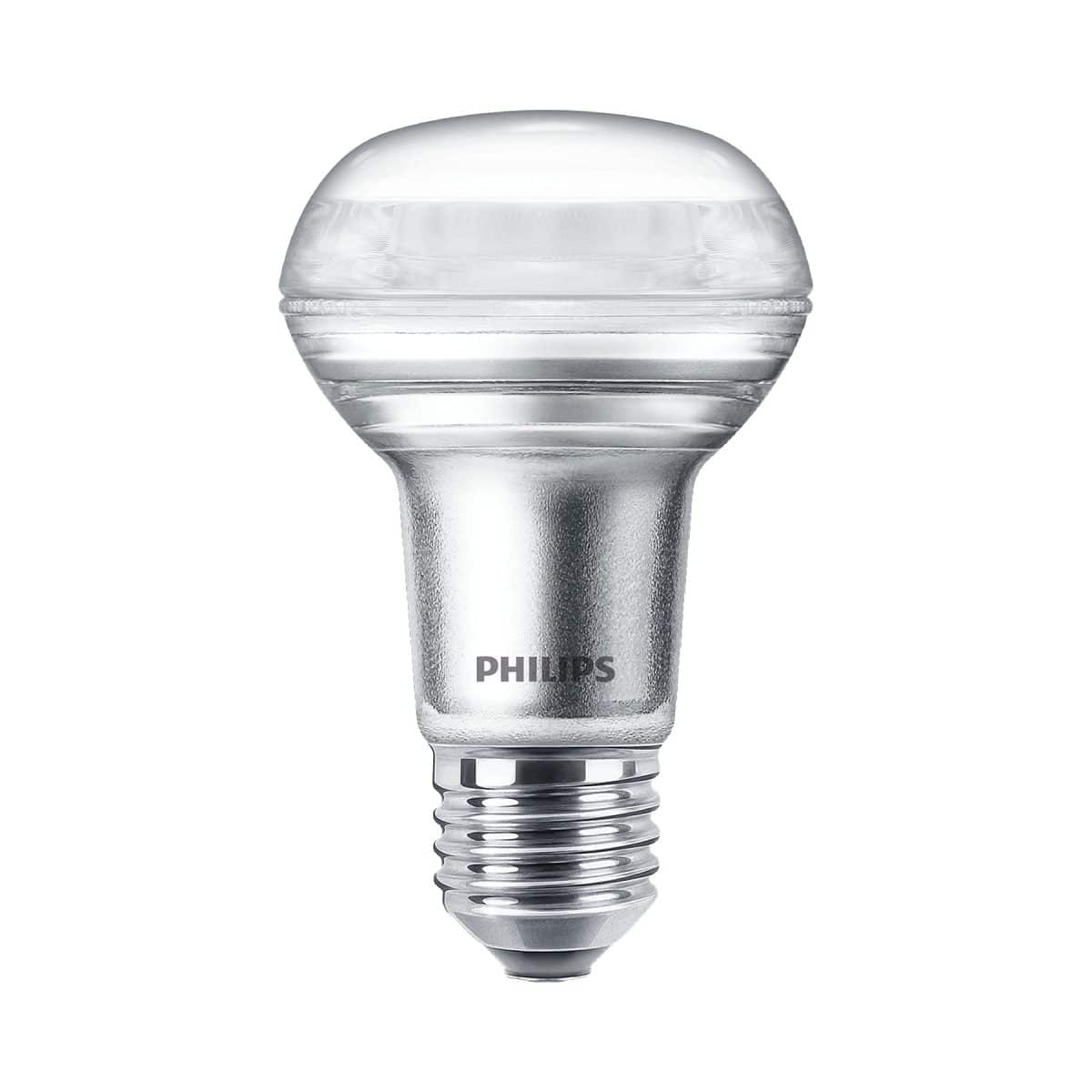 | 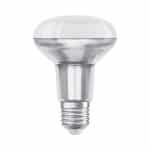 |
| Light bulb code | R50 | R63 | R80 |
| Diameter in millimetres | 50mm | 63mm | 80mm |
| Common lengths | 86-87mm | 100-102mm | 112-118mm |
PAR Series
Like Reflectors and Bulged Reflectors and Parabolic Aluminized Reflectors (PAR) are lined with a reflective material (aluminium in this case) designed to reflect more of the light out of the back of the bulb and increase the light output. PAR light bulbs are shorter in length than R and BR light bulbs, which makes them a better fit for light fixtures where you want a flushed look or low-profile appearance, reduced glare, and a spotlight aesthetic. This is ideal because the light from PAR bulbs do not have the soft, diffused edges of a Bulged Reflector.
They come in a range of base types, including GU10, G53, E14, E27 and B22, making them suitable for a number of fittings around residential and commercial settings, such as:
- Track lights
- Recessed lights
- Display lights
- Security lights
- Decorative floodlights
- Architectural and landscape lights
Most commonly used PAR series bulbs size chart |
|||||
|---|---|---|---|---|---|
| Light bulb | 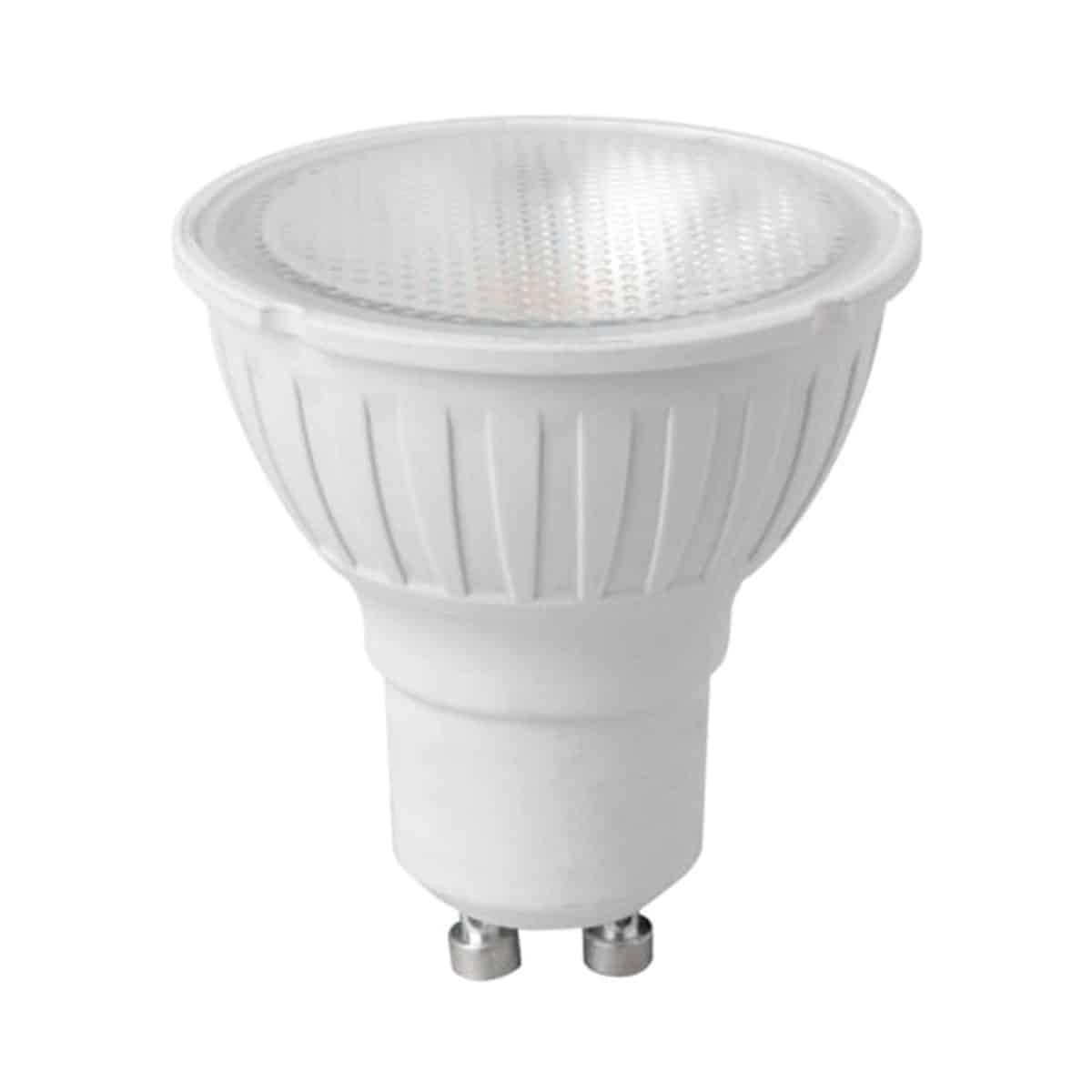 | 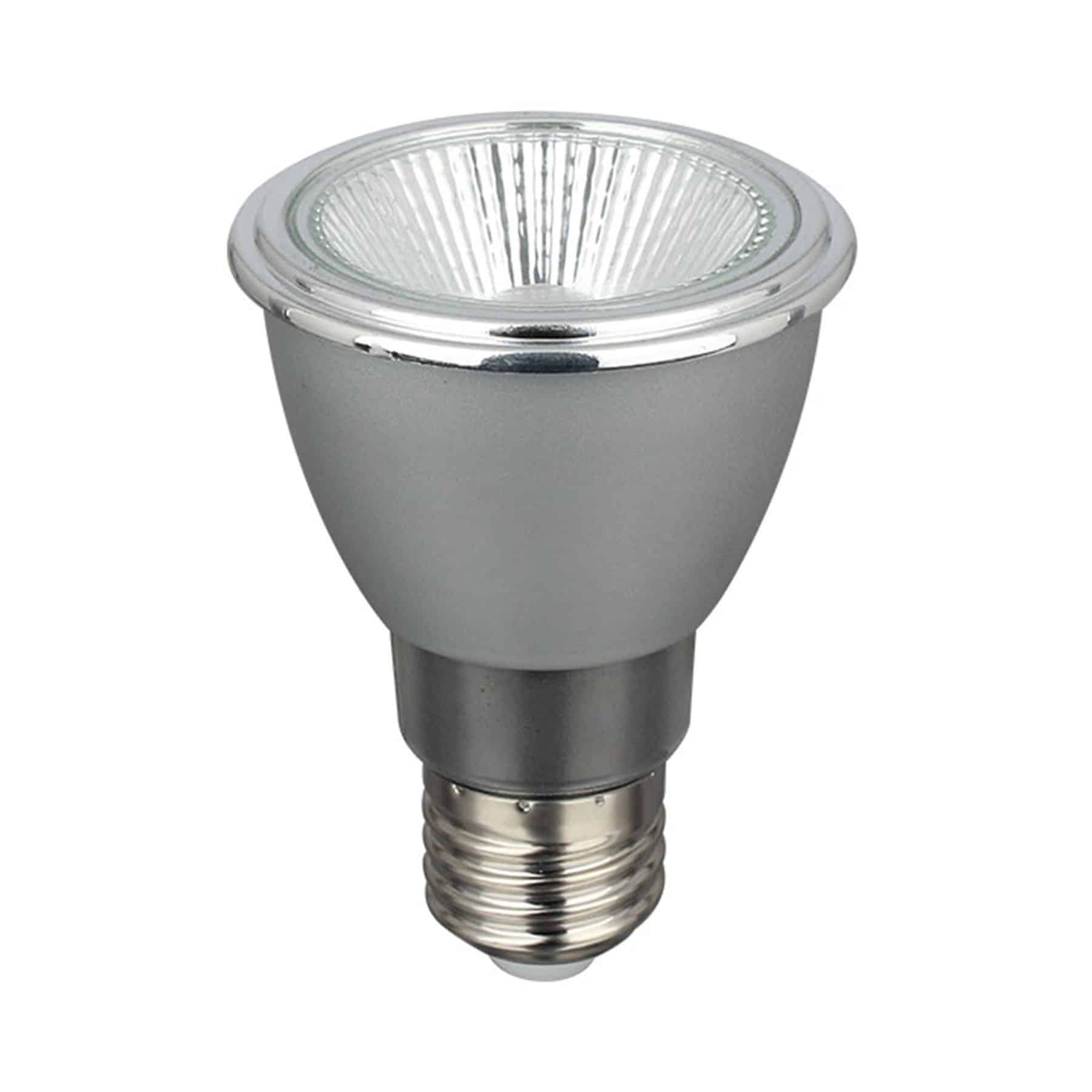 | 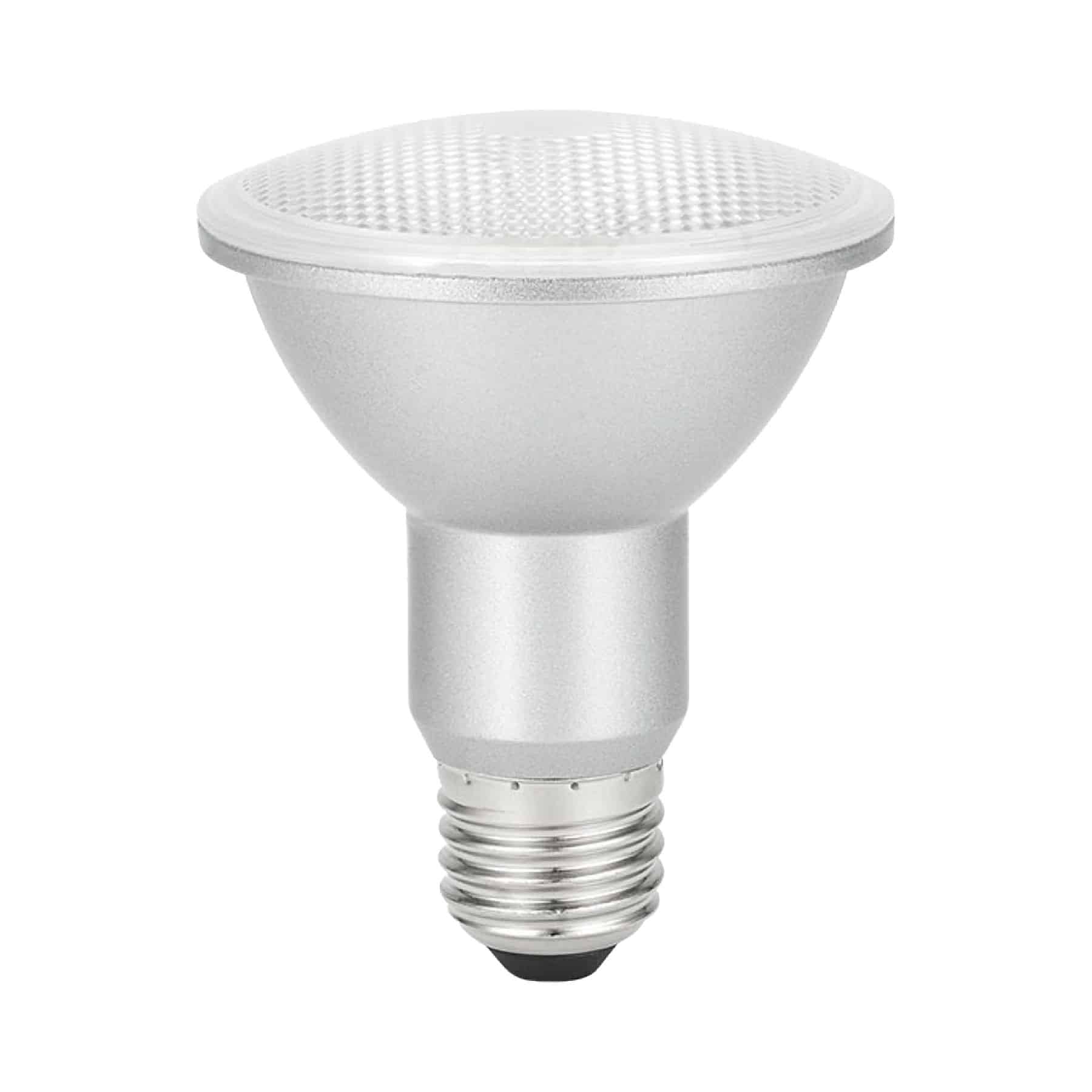 | 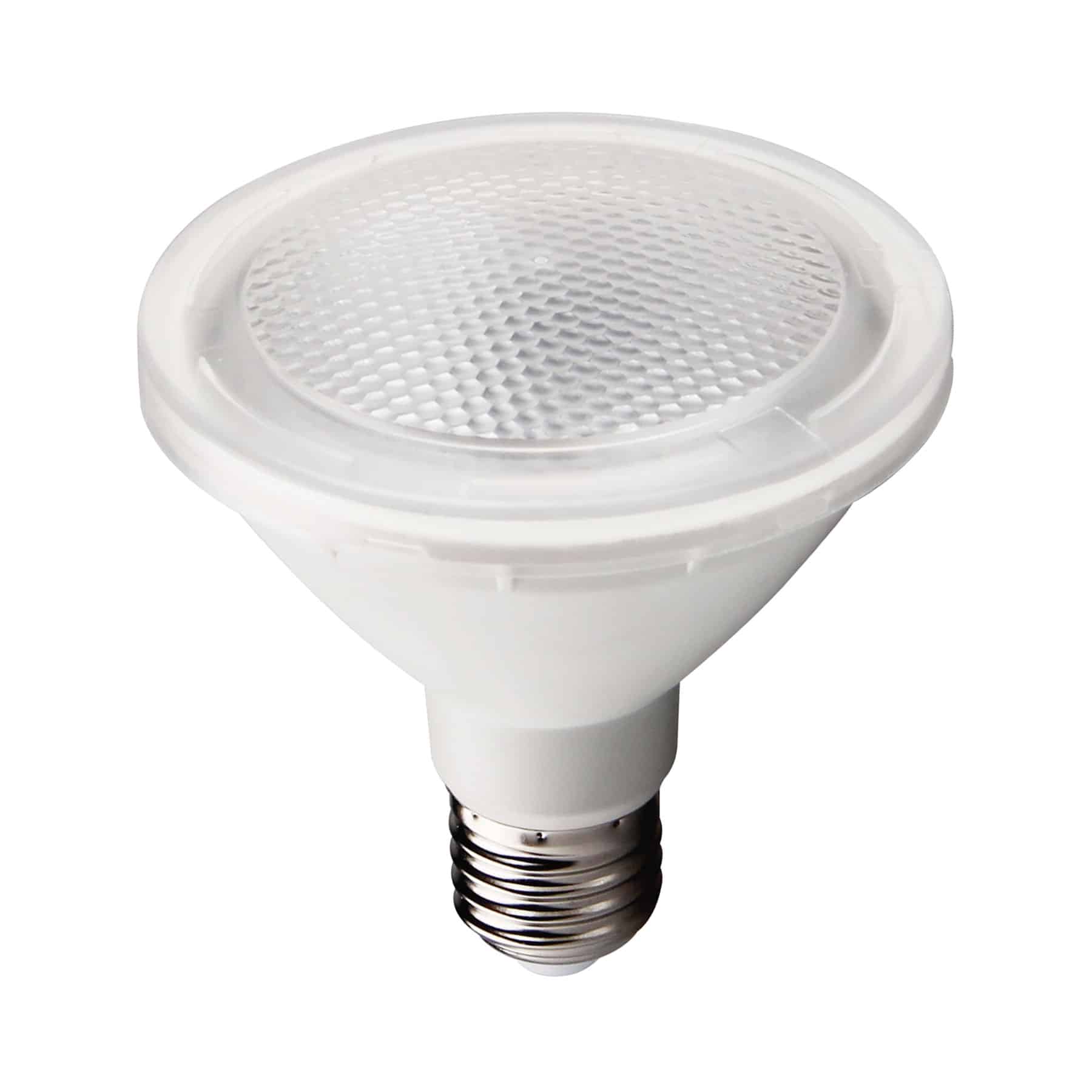 | 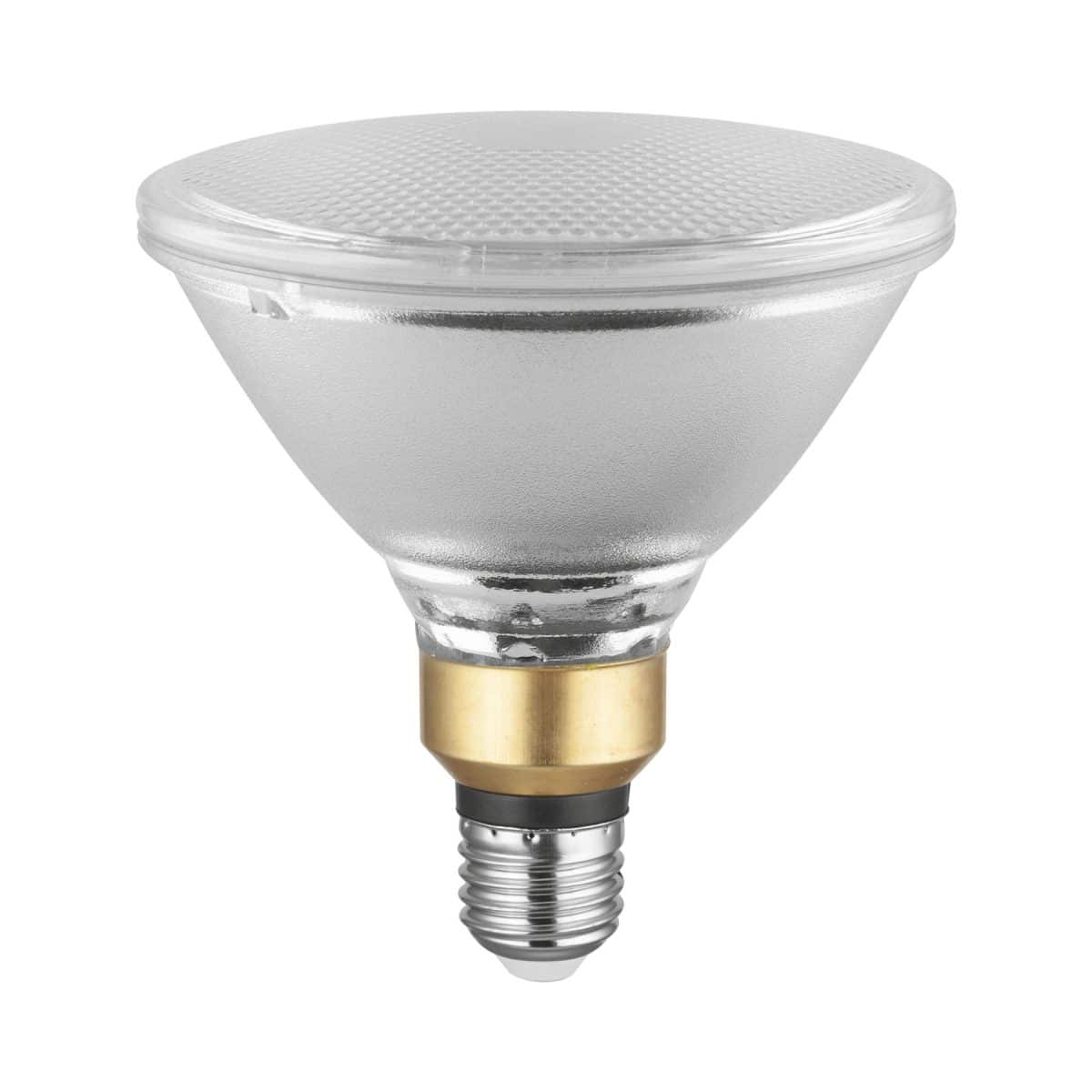 |
| Light bulb code | PAR16 | PAR20 | PAR25 | PAR30 | PAR38 |
| Diameter in millimetres | 50mm | 63mm | 80mm | 95mm | 120mm |
| Common lengths | 50-55mm | 64-89mm | 90-100mm | 90-100mm | 134-136mm |
MR Series
Similar to their larger counterparts, Multifaceted Reflector (MR) bulbs are light bulbs with a reflective lining. They are available with GU5.3, GU4, and GZ10 base types. As their name would suggest, the reflective material on an MR bulb is multi-faceted, helping them to provide a directional beam of light that can provide either a narrow or wide spotlight. This versatility in light bulb beam angles makes them well-suited for use in:
- Track lighting
- Recessed lighting
- Desk lamps
- Display cases
- Landscape lighting
Most commonly used MR series bulbs size chart |
||
|---|---|---|
| Light bulb | 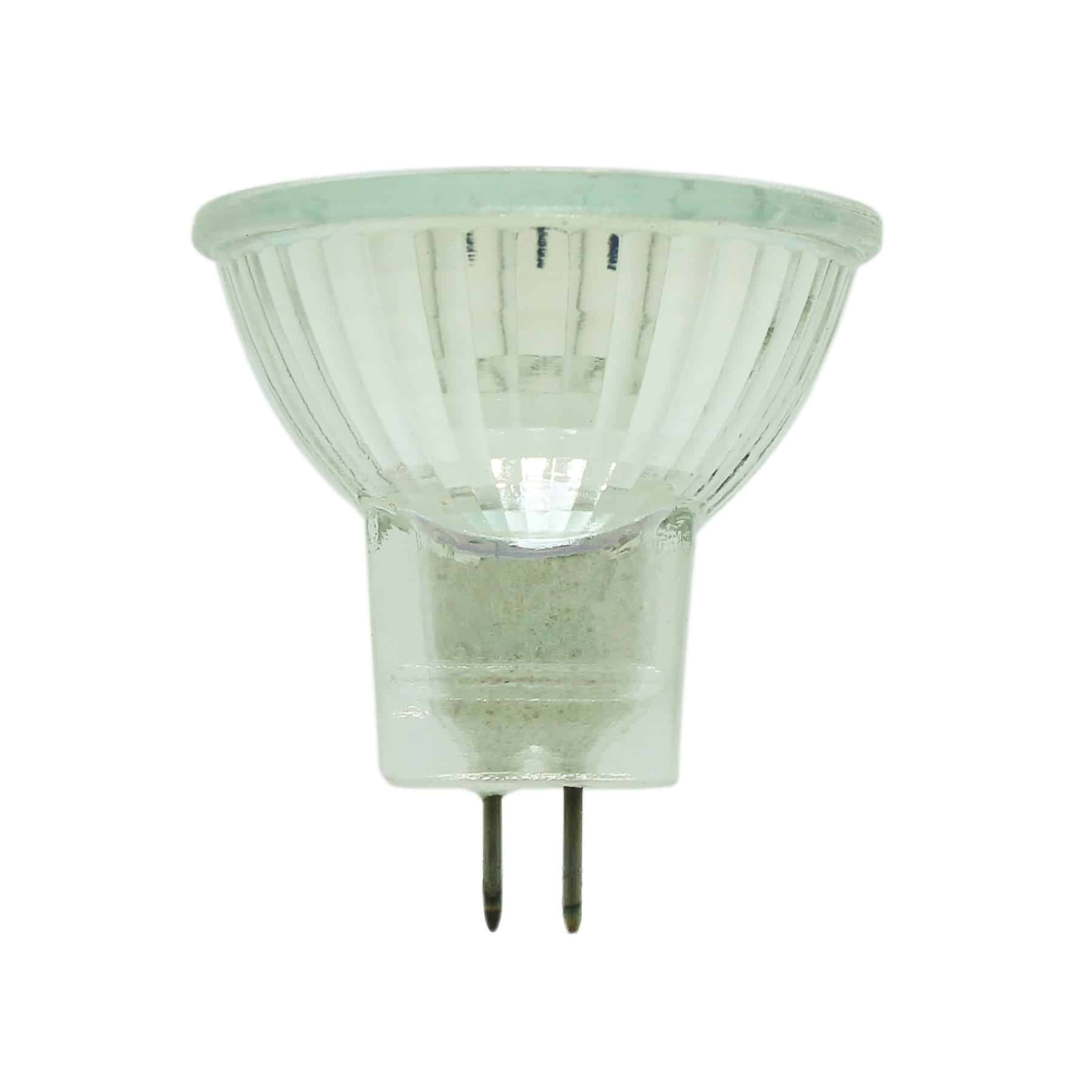 | 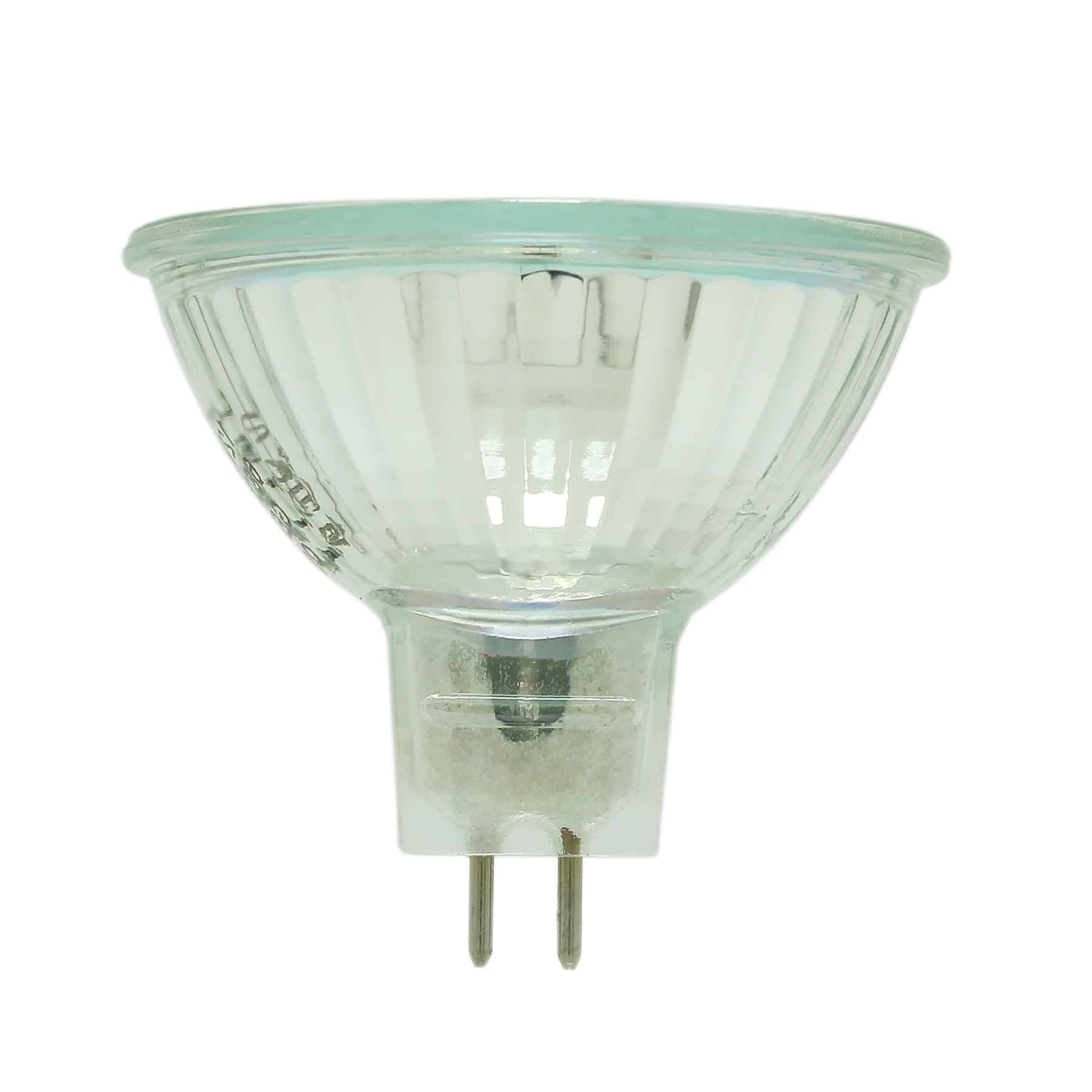 |
| Light bulb code | MR11 | MR16 |
| Diameter in millimetres | 35mm | 50mm |
| Common lengths | 35-37mm | 45-50mm |
G Series
Globe (G) bulbs are spherical light bulbs that come in a variety of sizes. They come in small, golf-ball-sized light bulbs suited for small, enclosed fixtures, up to extra large globes the size of a crystal ball designed to be displayed. Larger G light bulbs commonly feature carbon or LED filaments, lending them an aesthetically appealing look. The large range of sizing makes them easy to fit in a variety of fittings in many settings, including:
- Small enclosed fixtures
- Pendant lamps
- Chandeliers
- Decorative fixtures
- Vanities
Most commonly used G series bulbs size chart |
||||
|---|---|---|---|---|
| Light bulb | 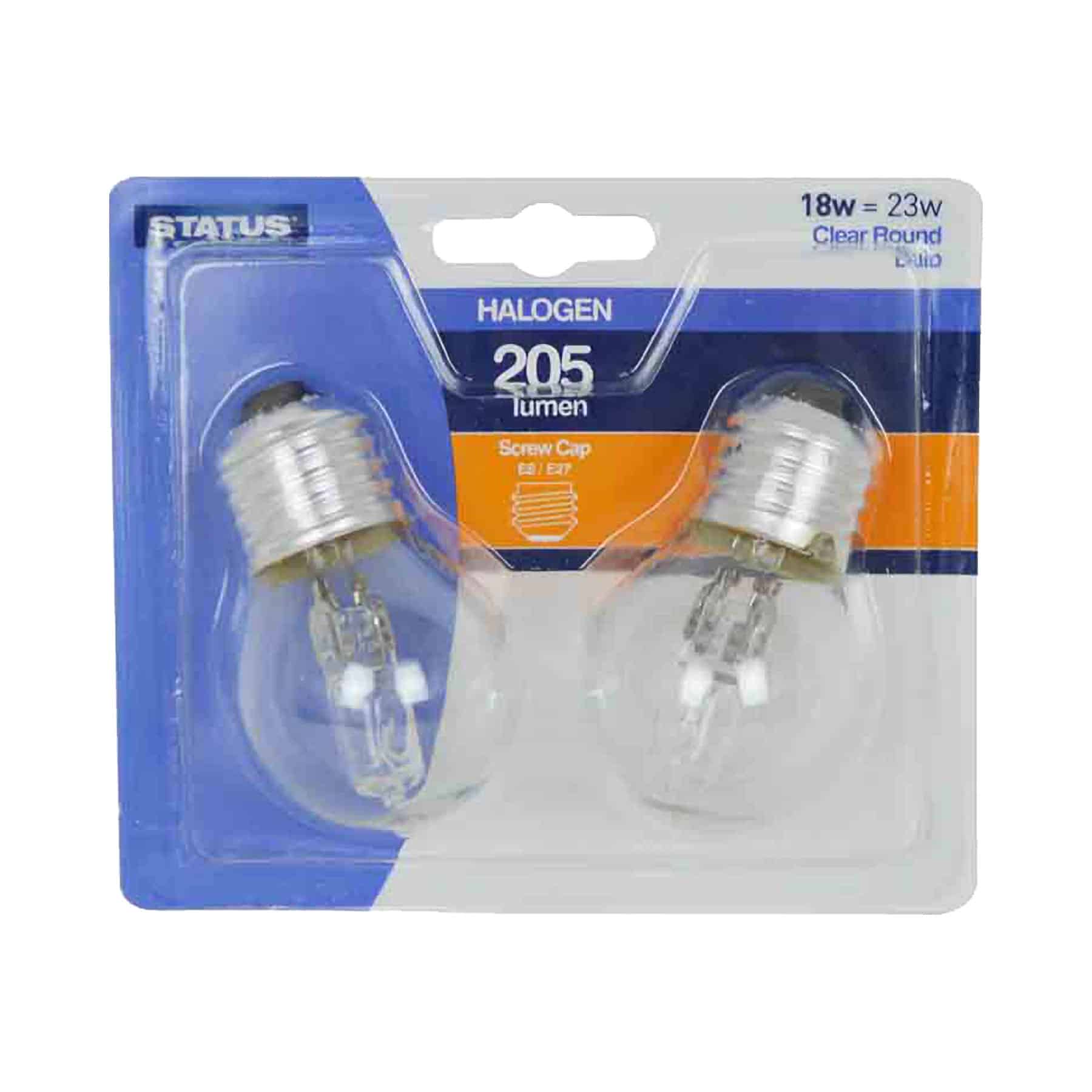 | 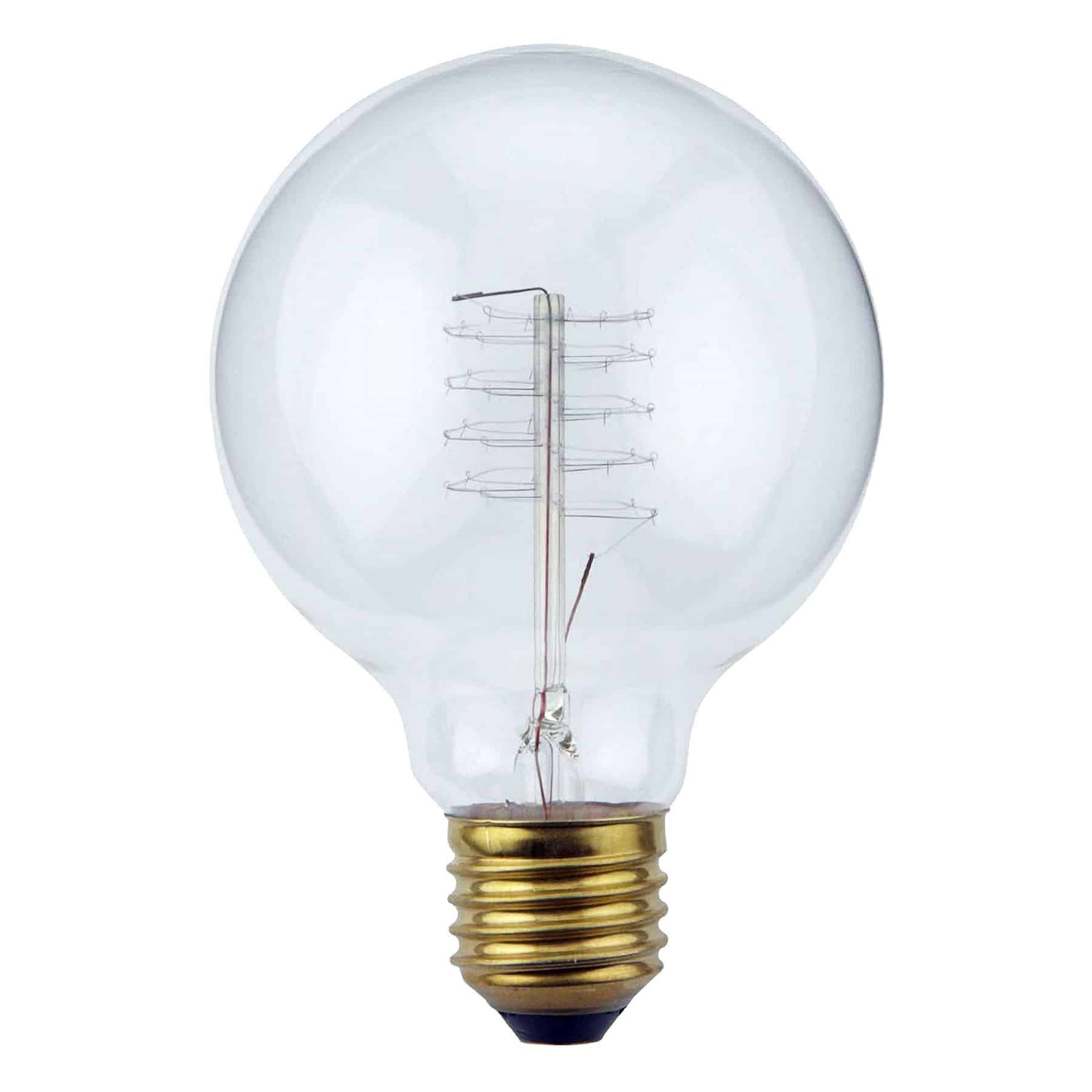 | 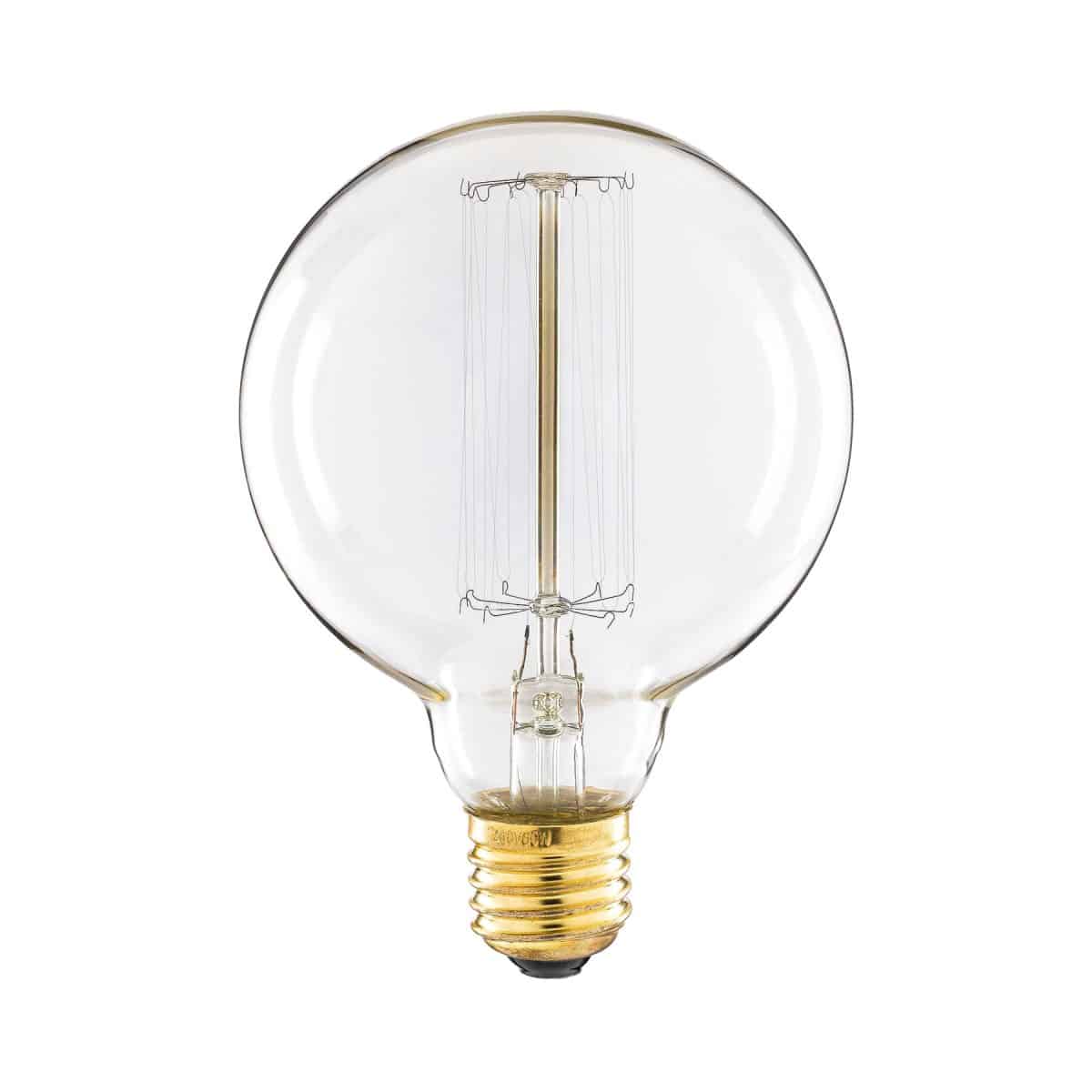 | 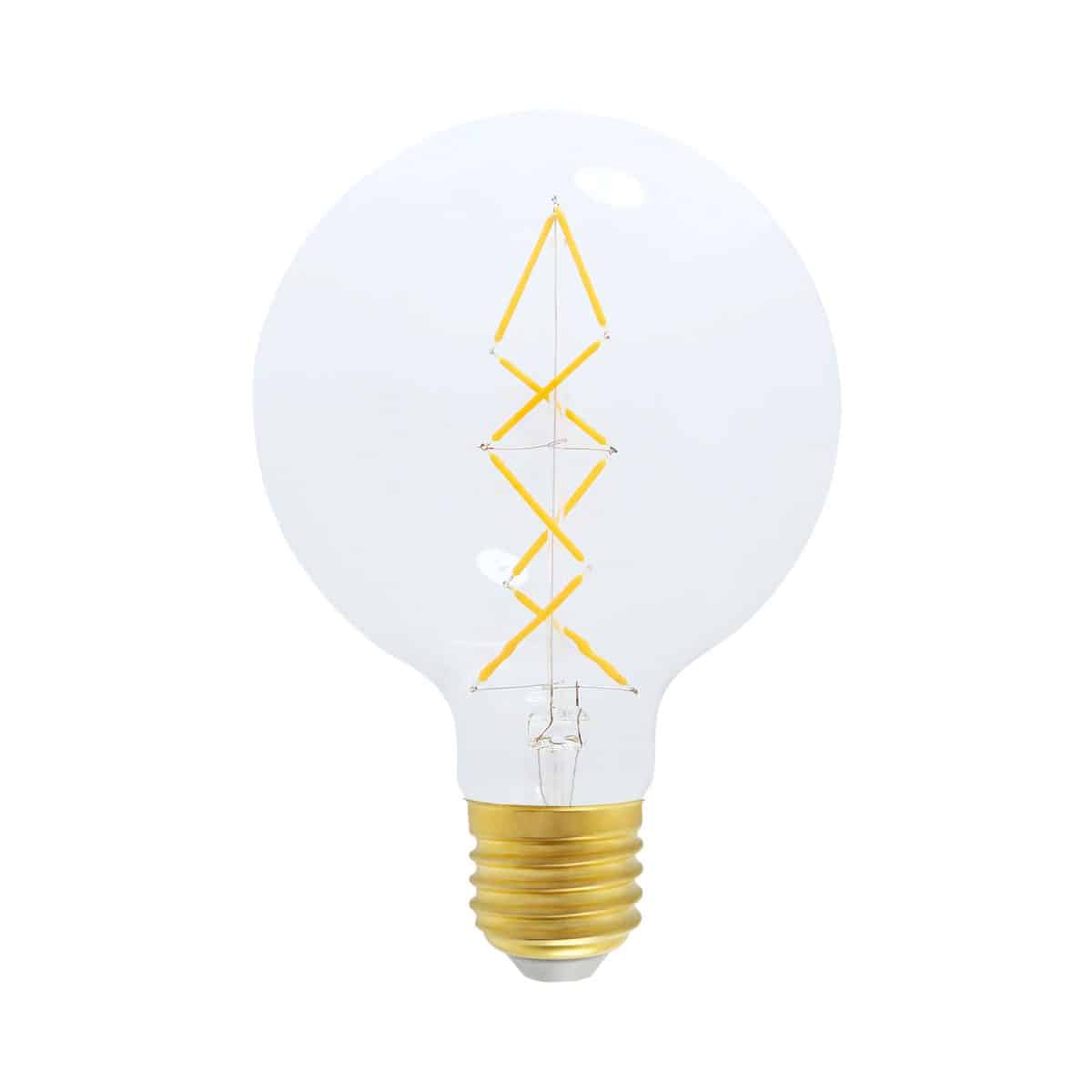 |
| Light bulb code | G45 | G80 (UK) or G25 (US) | G95 (UK) or G30 (US) | G125 (UK) or G40 (US) |
| Diameter in millimetres | 45mm | 80mm | 95mm | 125mm |
| Common lengths | 75-78mm | 120mm | 140mm | 165-170mm |
Tubes/Tubular (T Series)
Tube or Tubular (T) bulbs are available in a variety of sizes and tube shapes, from familiar fluorescent tubes to aesthetically-pleasing tubular shapes similar to a test-tube commonly associated with filament bulbs. Their range of sizes and base types (including E27, E12, G5, and G13) make them suitable for a wide range of applications:
- Chandeliers
- Sconces
- Pendant lamps
- Warehouse lighting
- Garage lighting
Most commonly used T size chart |
||||
|---|---|---|---|---|
| Light bulb | 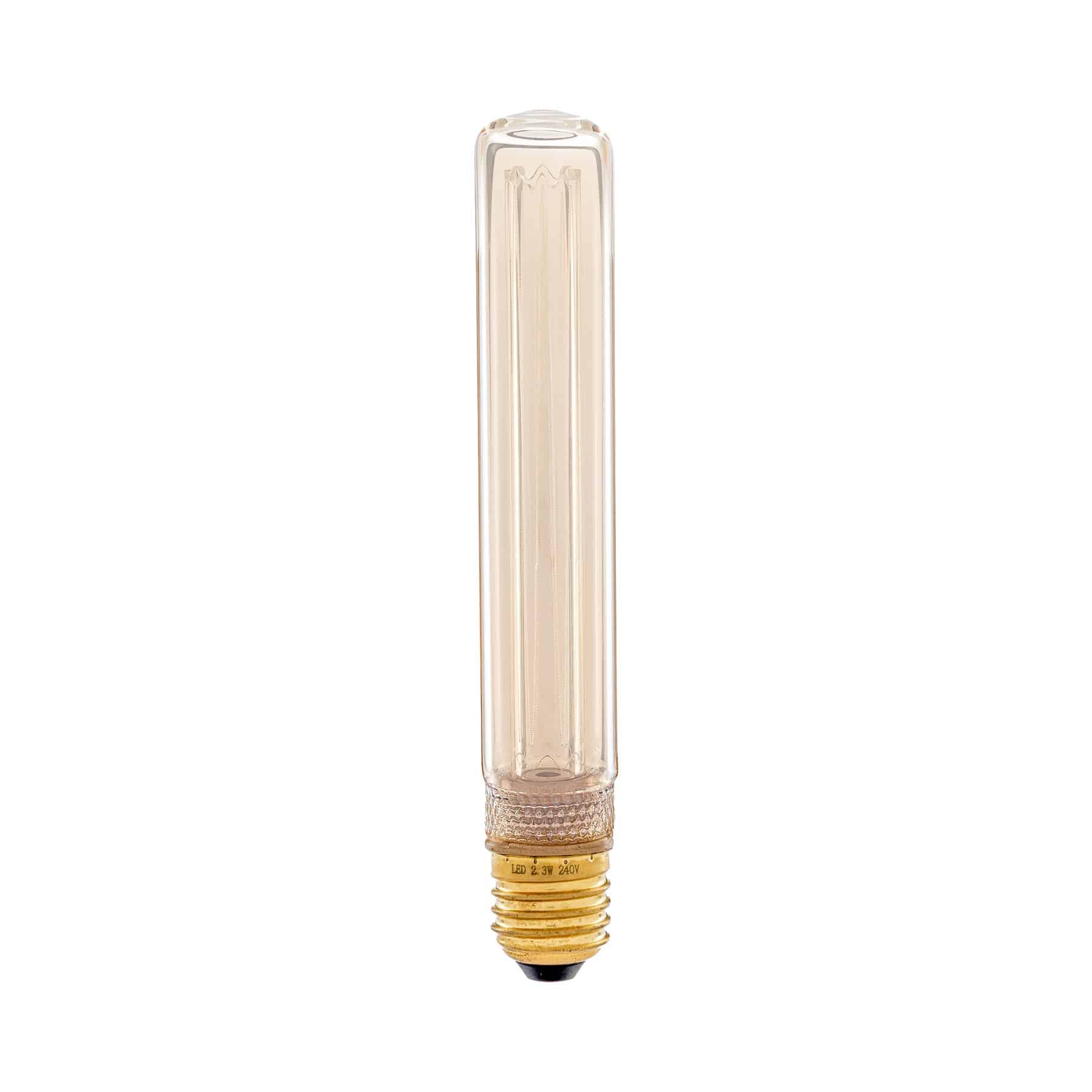 | 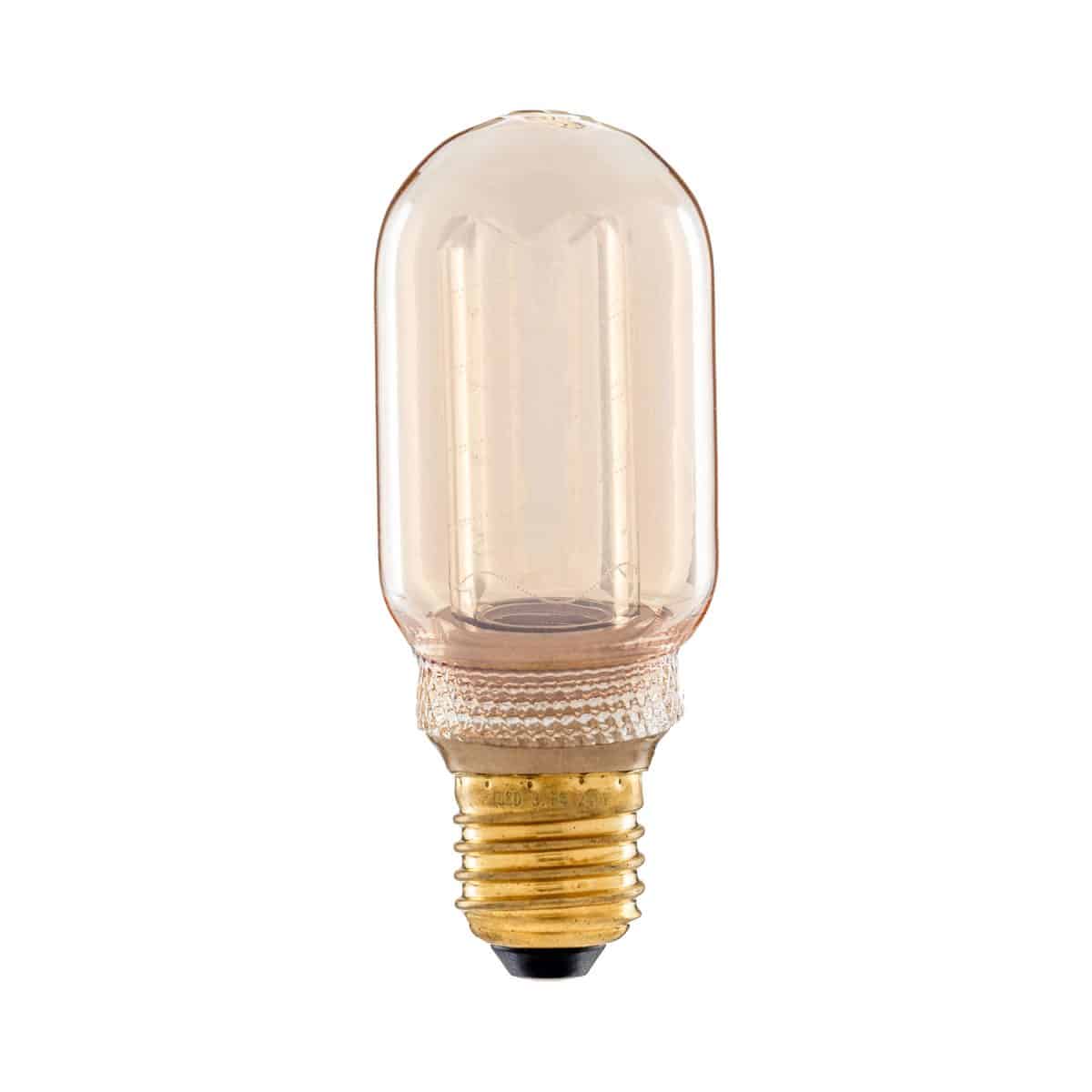 | 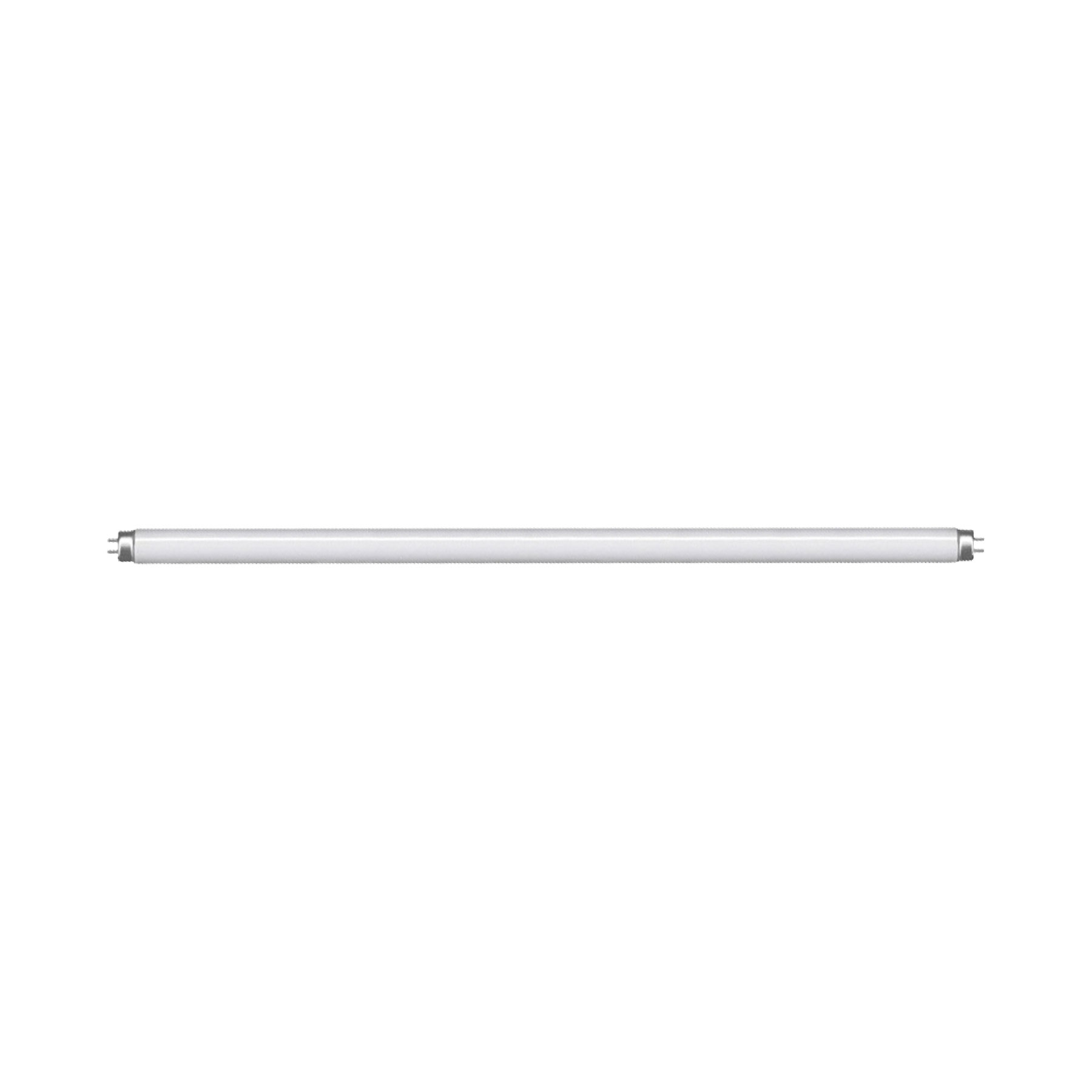 | 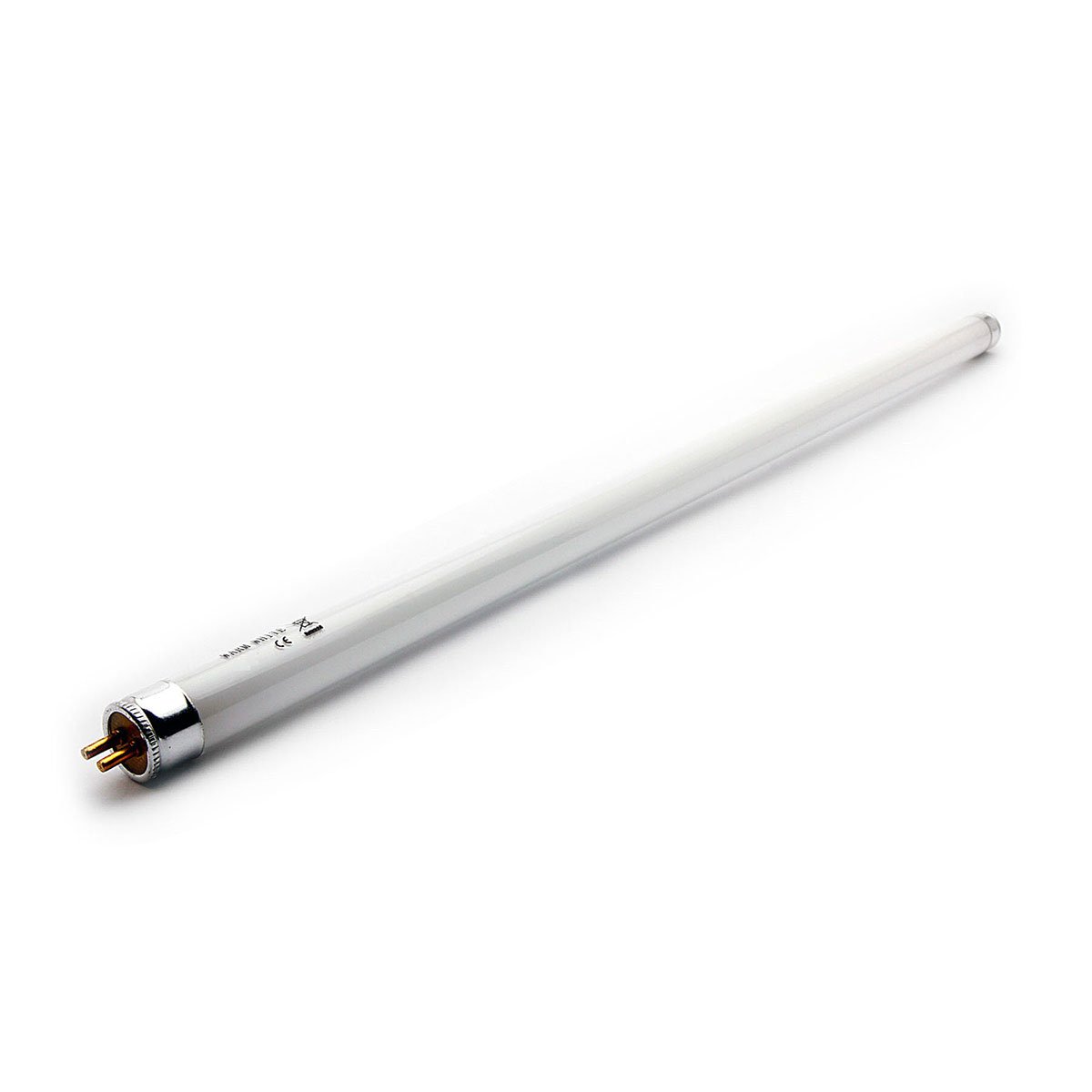 |
| Light bulb code | T30 | T45 | T5 | T8 |
| Diameter in millimetres | 30mm | 45mm | 16mm | 26mm |
| Diameter in one-eights of an inch | (1.18") | (1.77") | 5/8 (0.63") | 8/8 (1") |
| Common lengths | 225-300mm | 110mm | 305-1463mm | 330-1220mm |
Conclusion
Light bulbs have changed a lot since their inception. In this world of new light bulbs, with so much selection, finding the perfect light bulb for your lamp can be difficult. Knowing a light bulbs vital stats will make it easier to find the perfect lamp for any fixture, including:
- Light bulb series
- Light bulb shape
- Caps and bases
- Light bulb dimensions
- Commonly used locations


